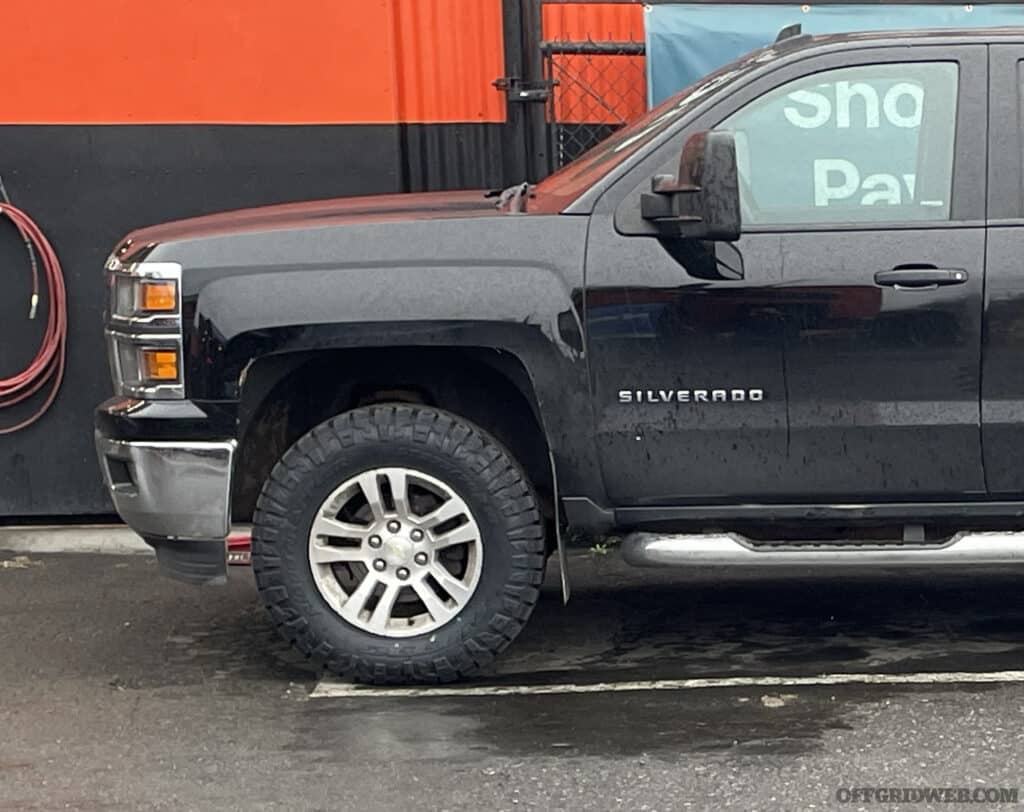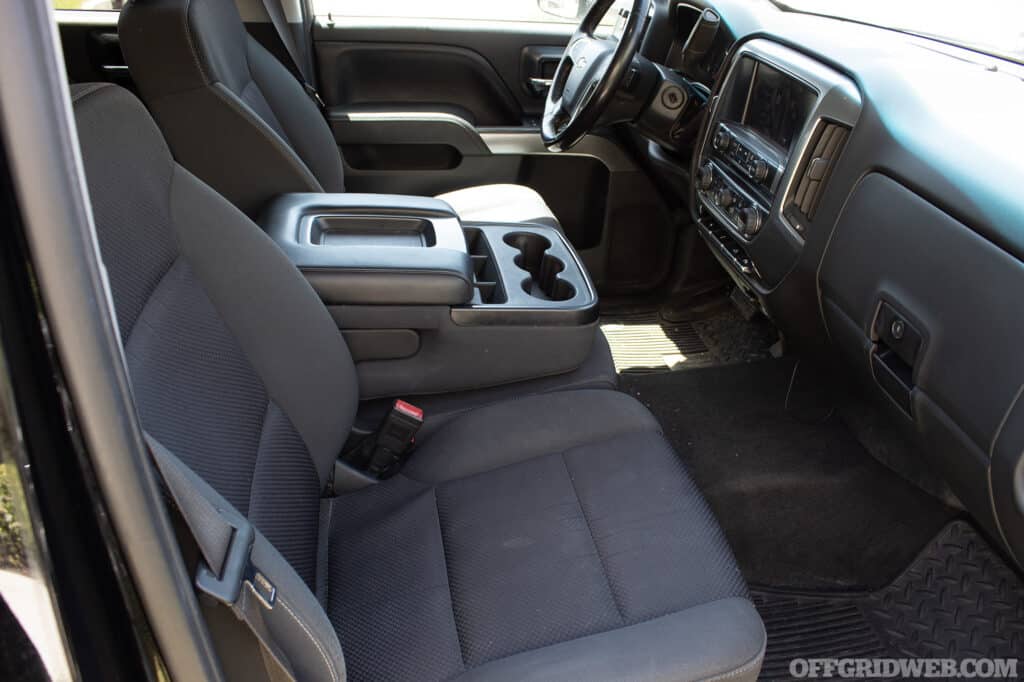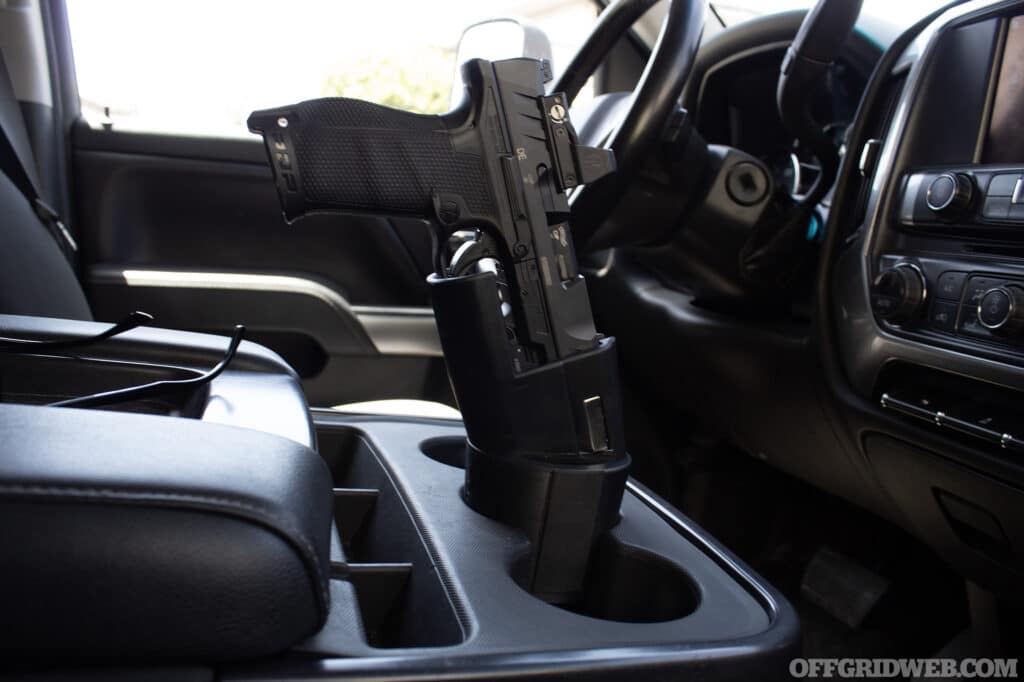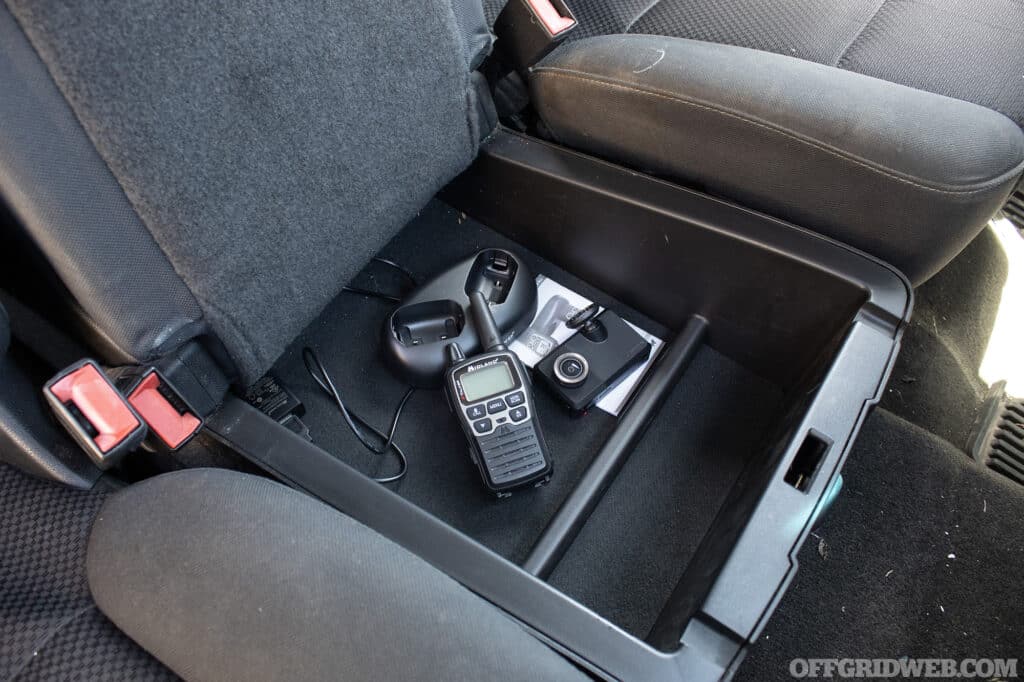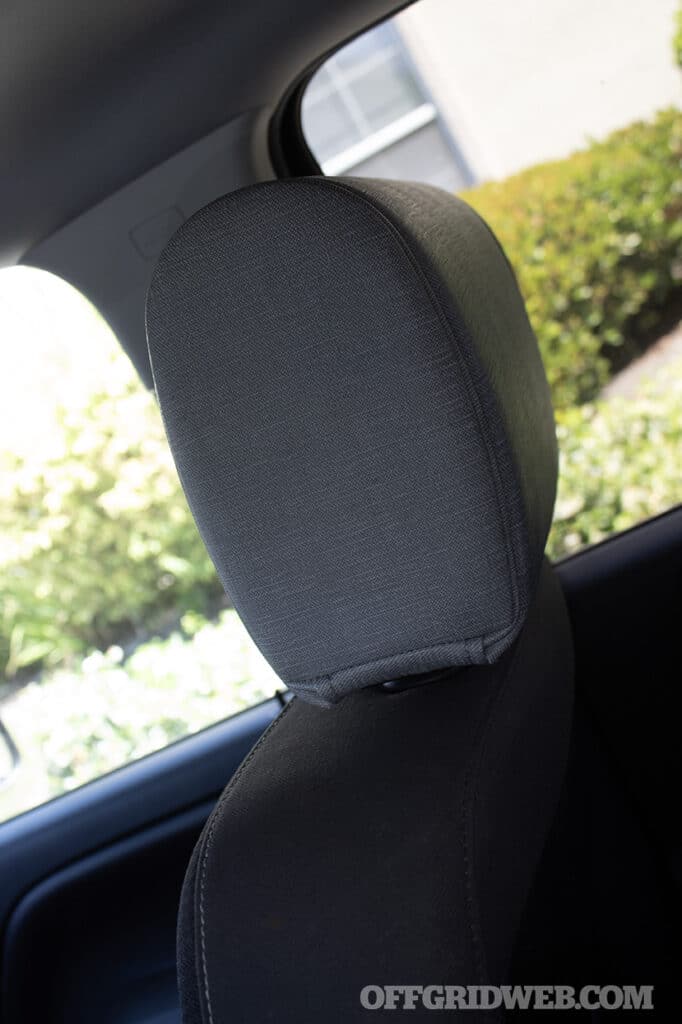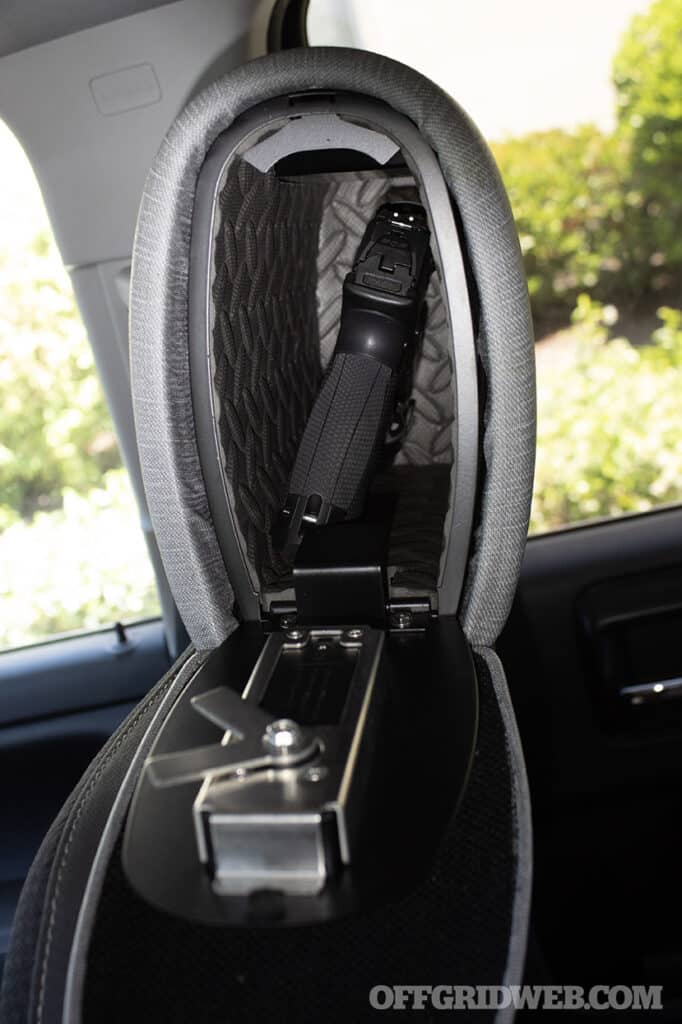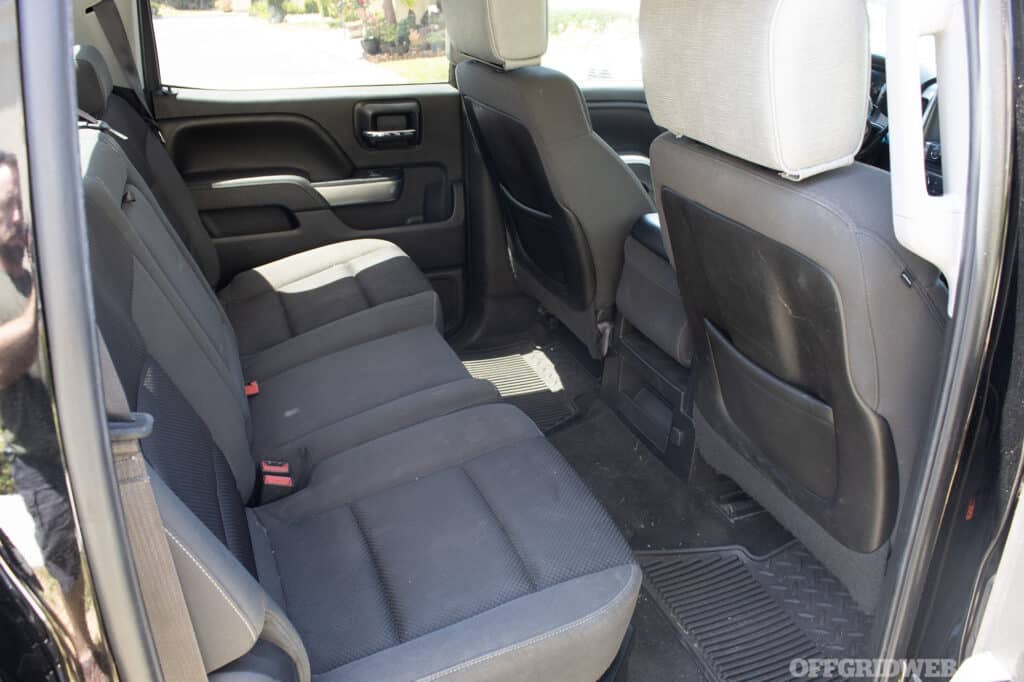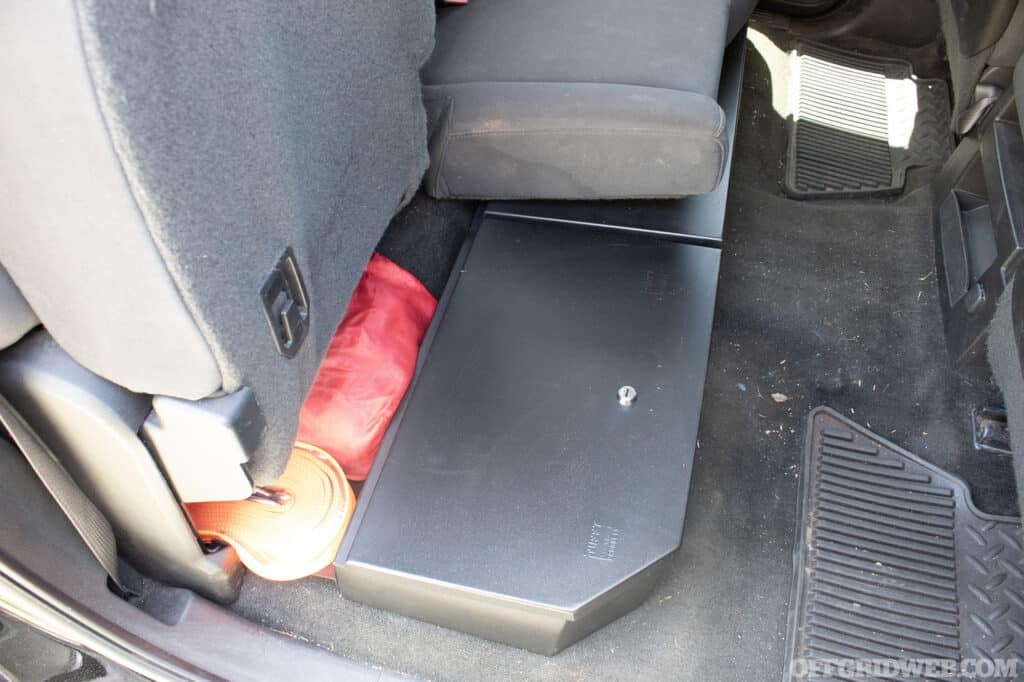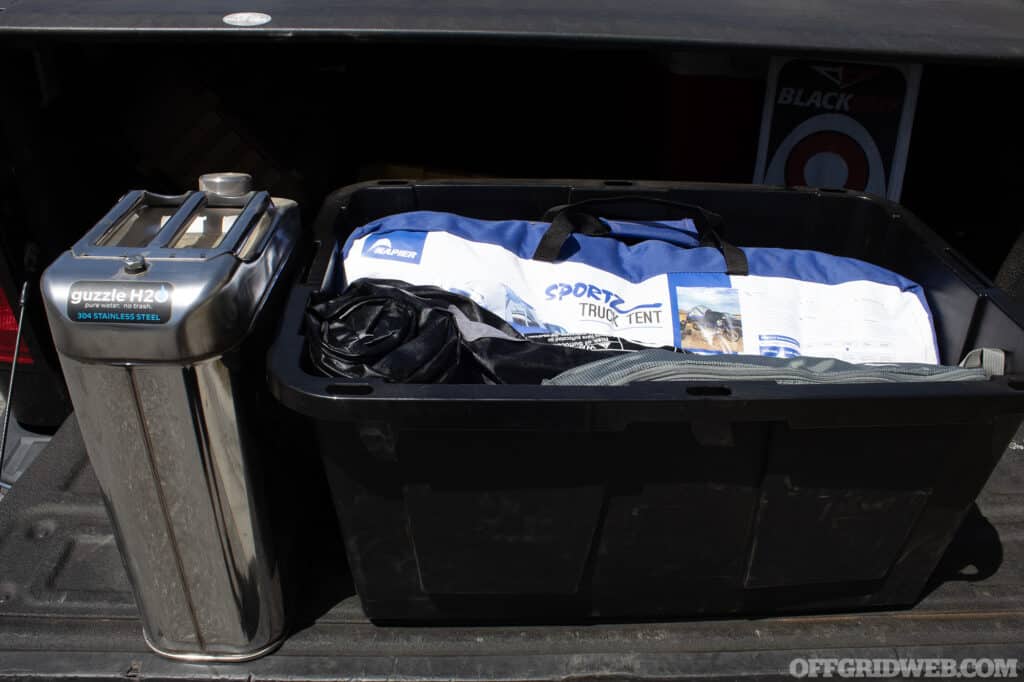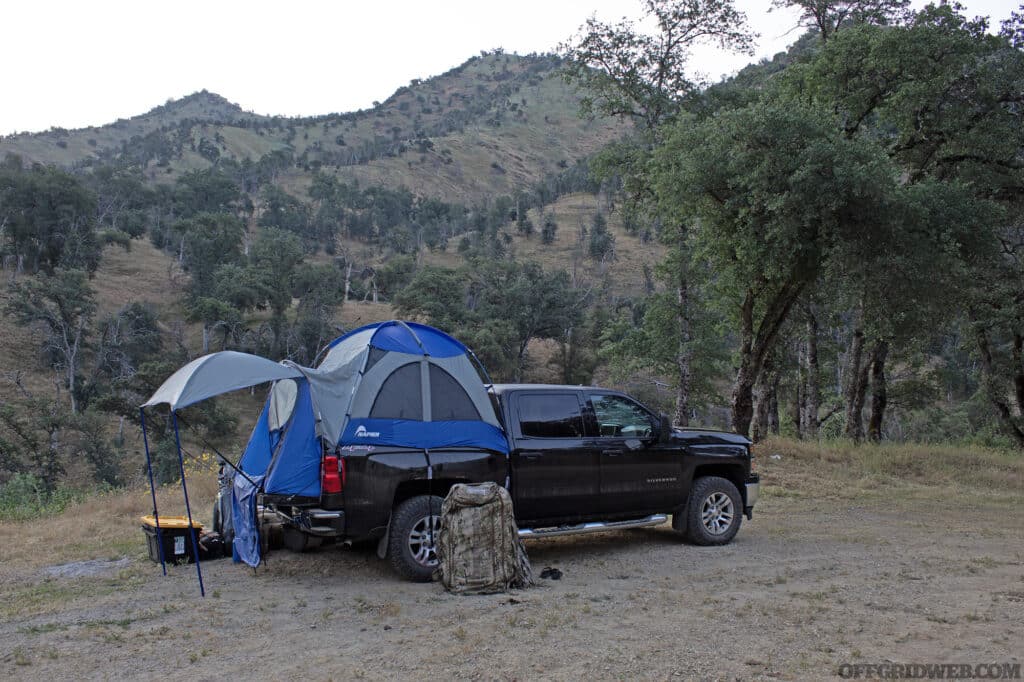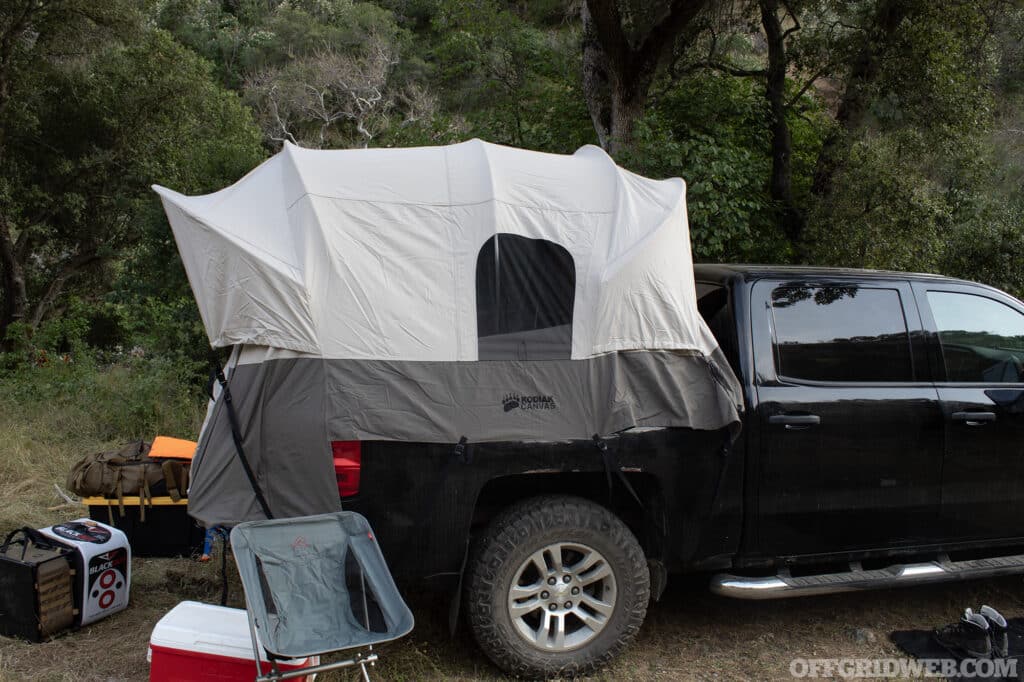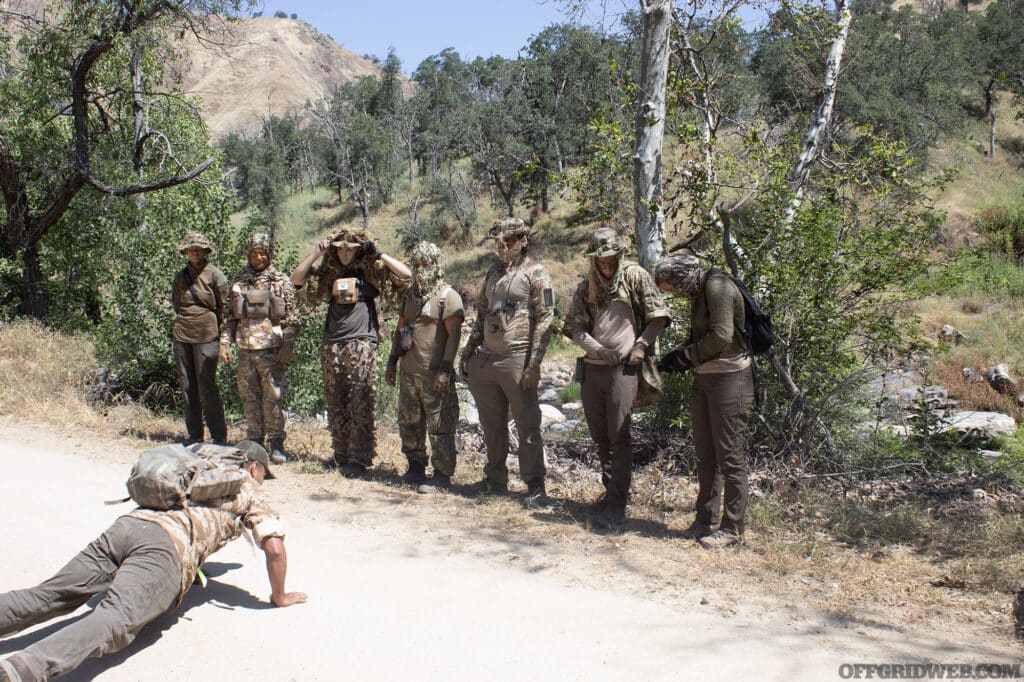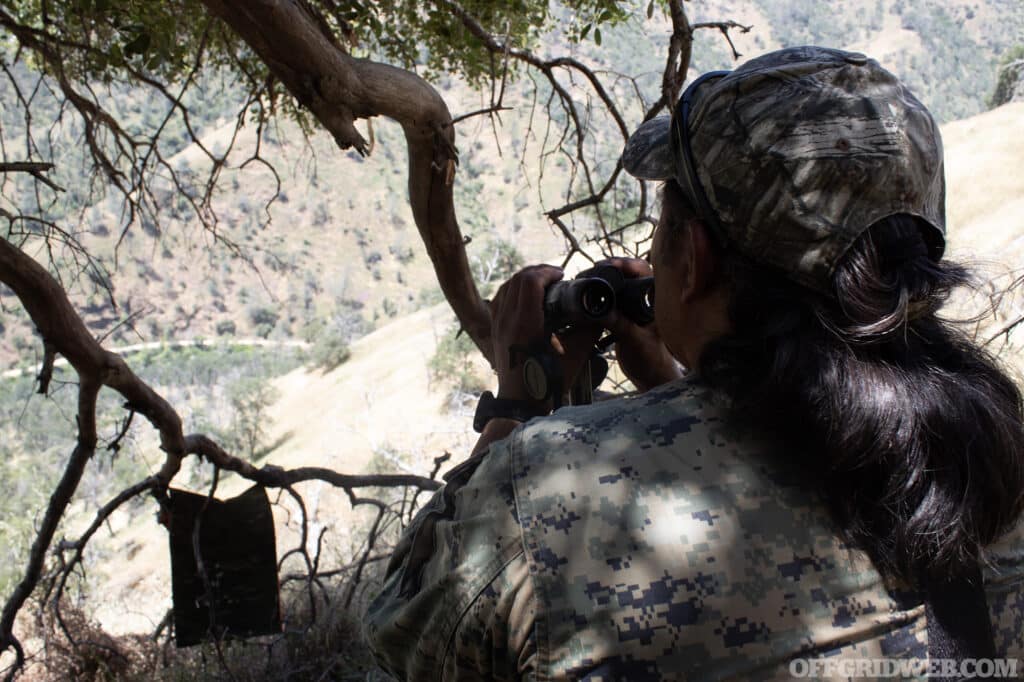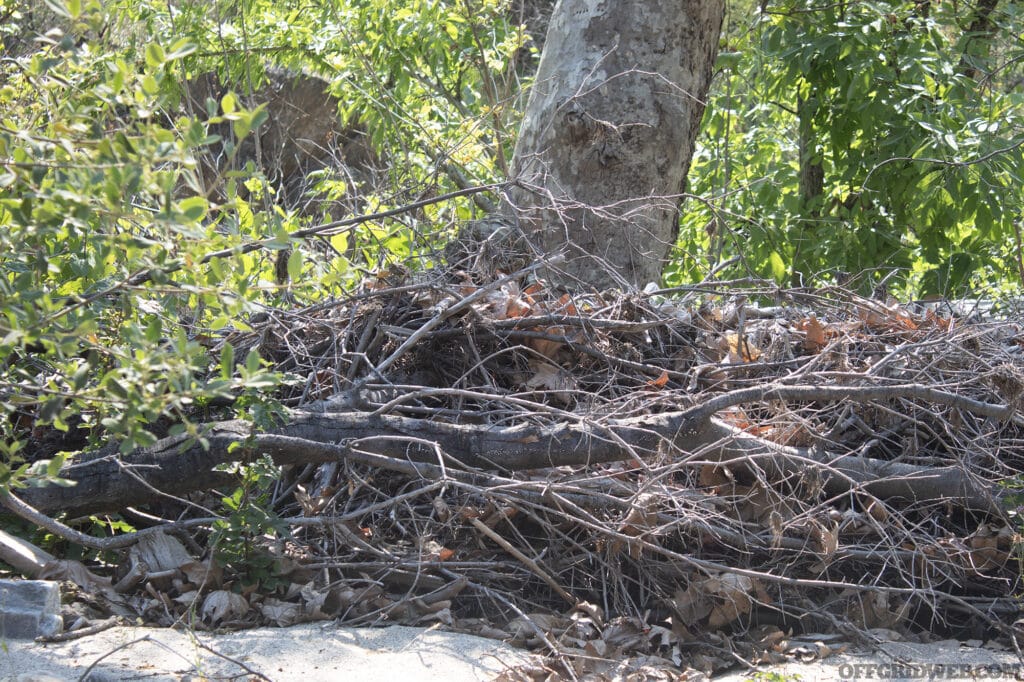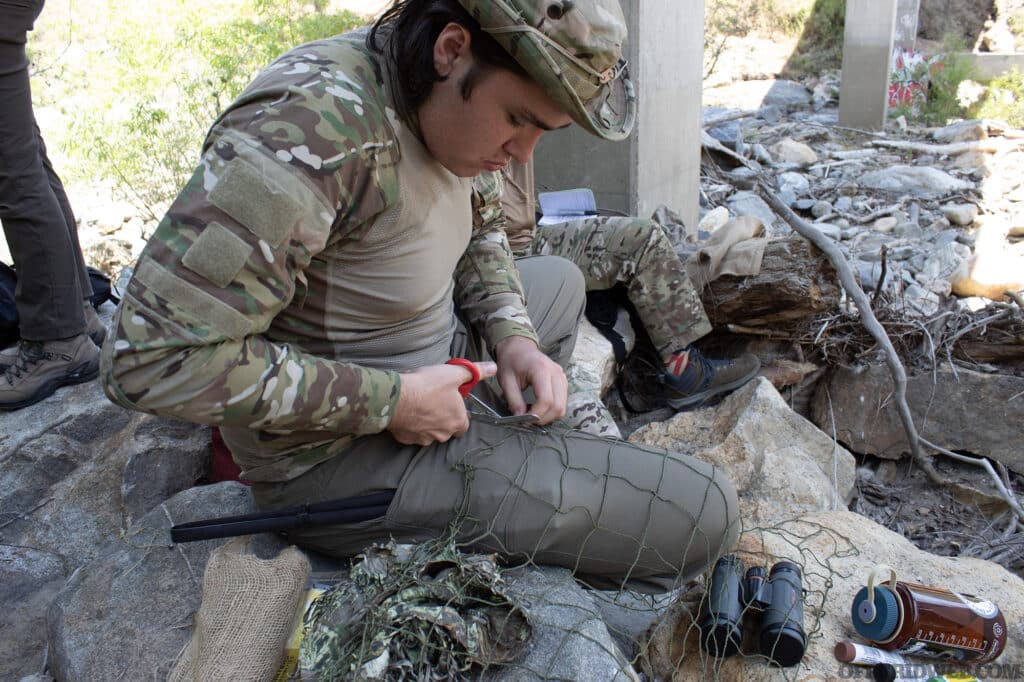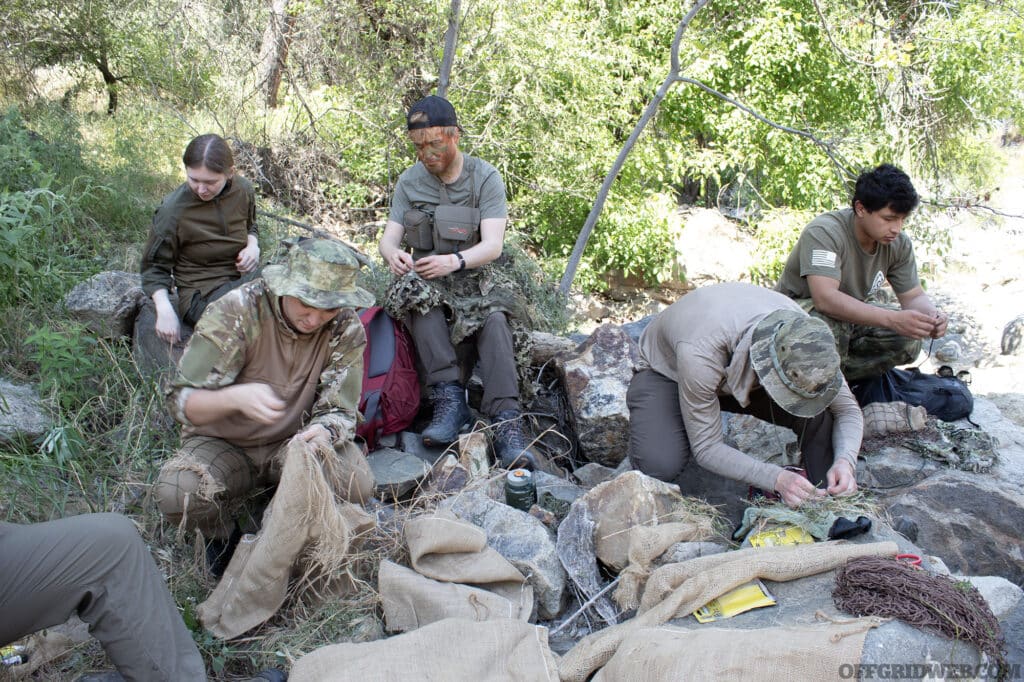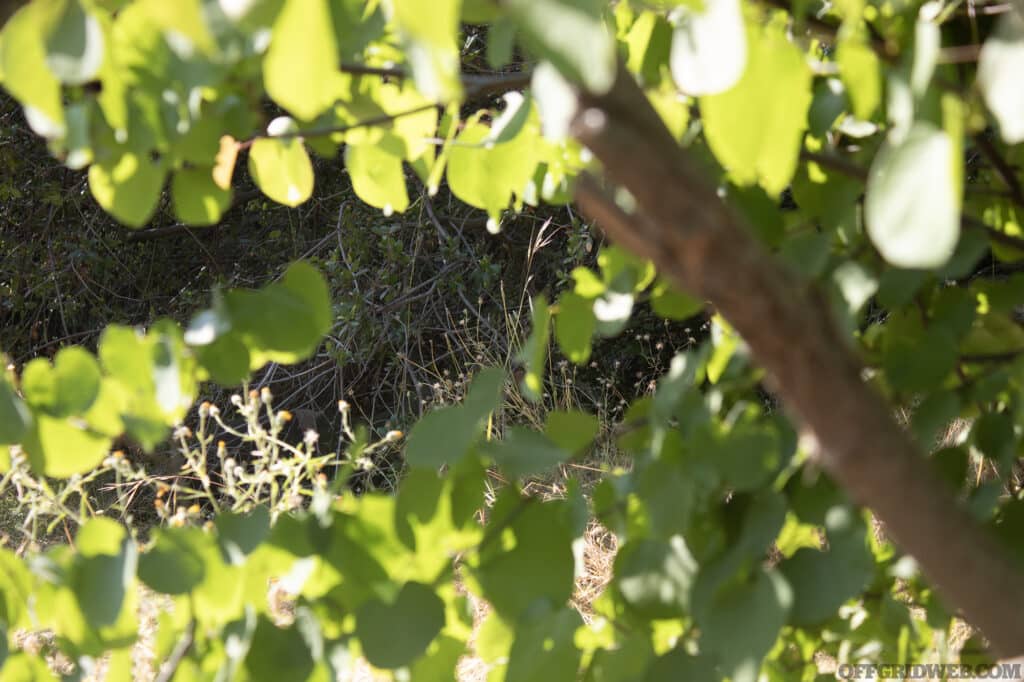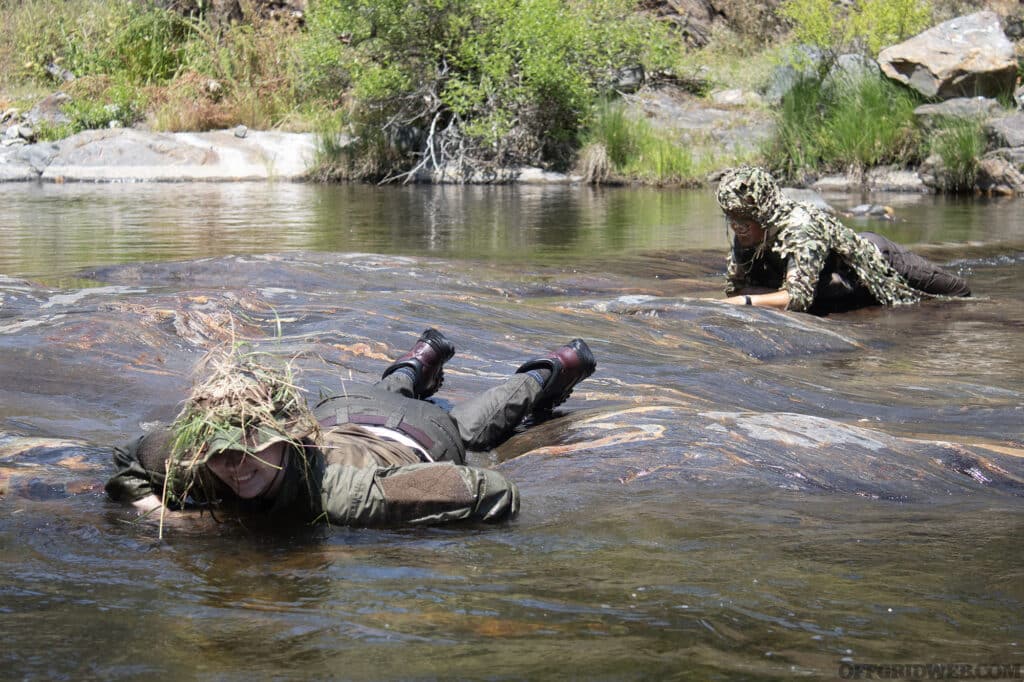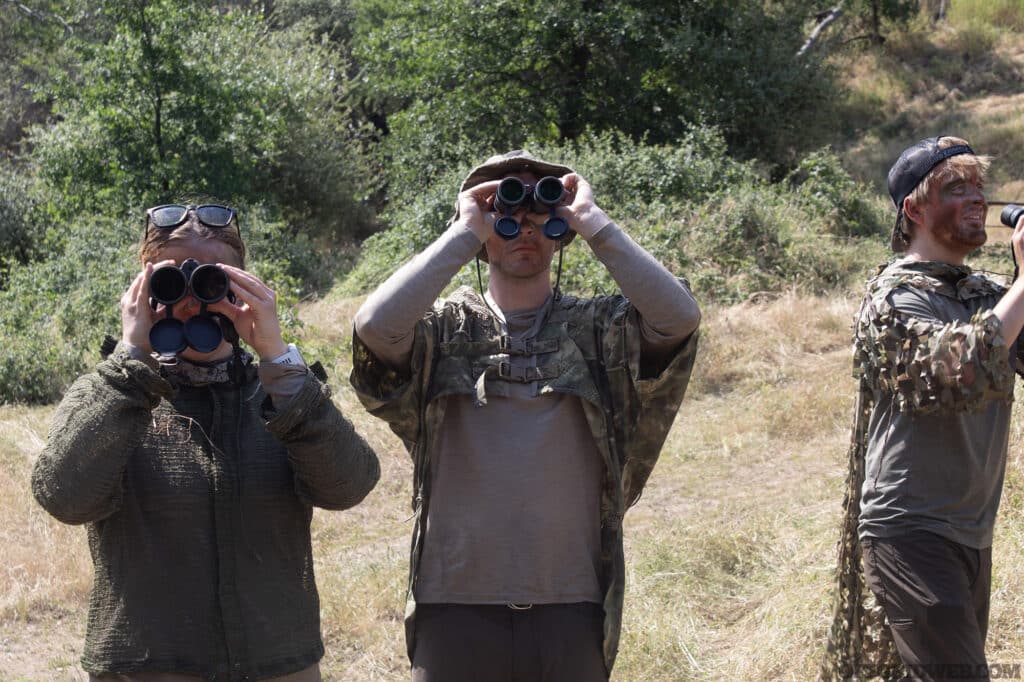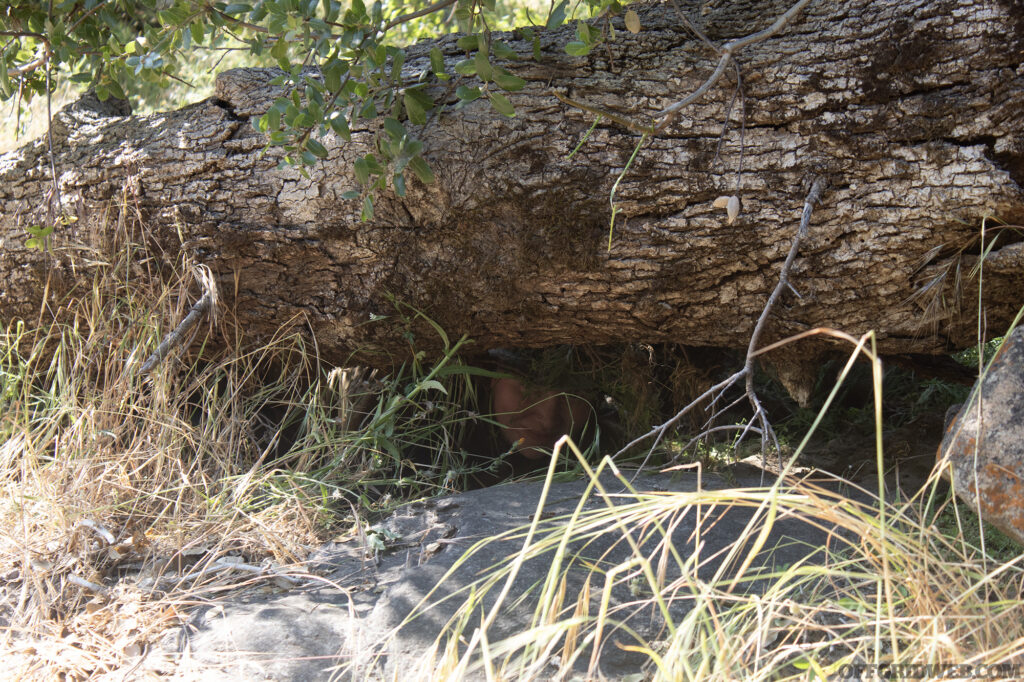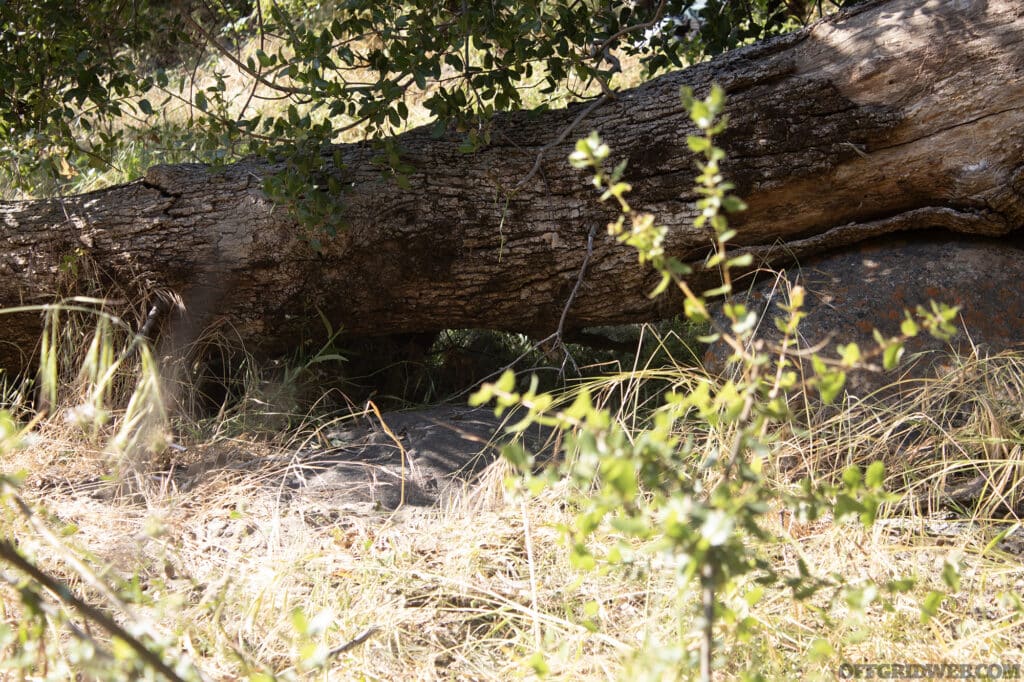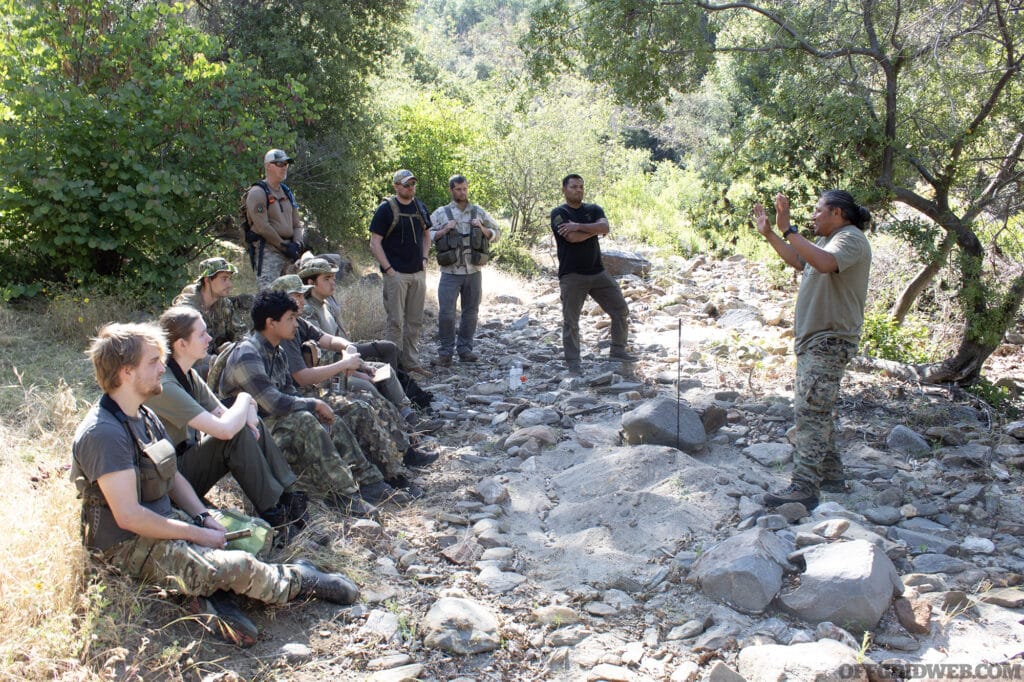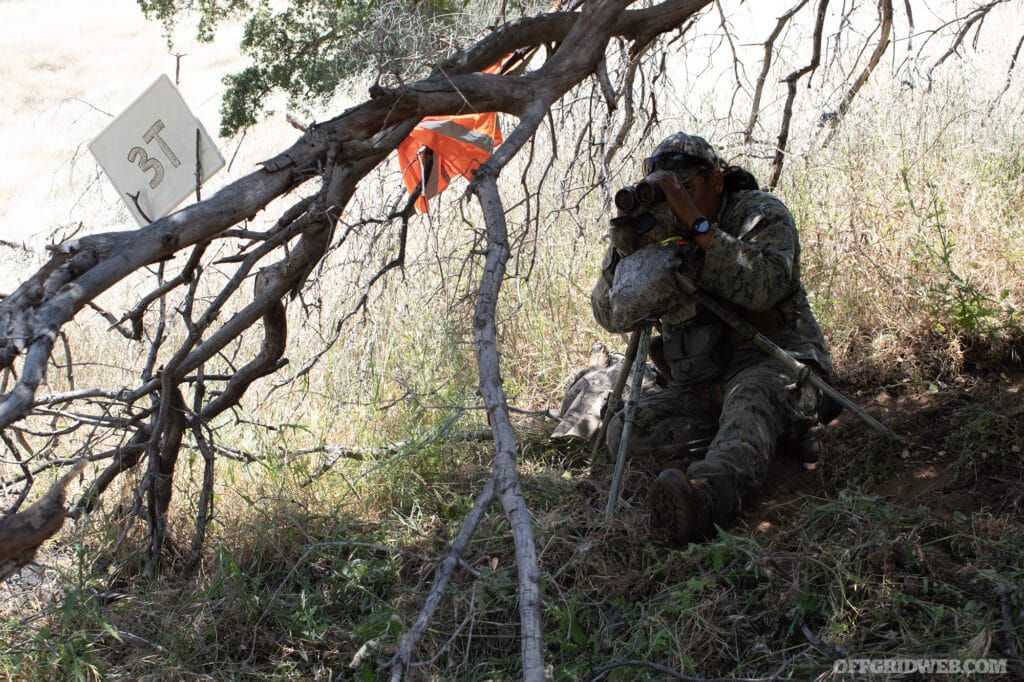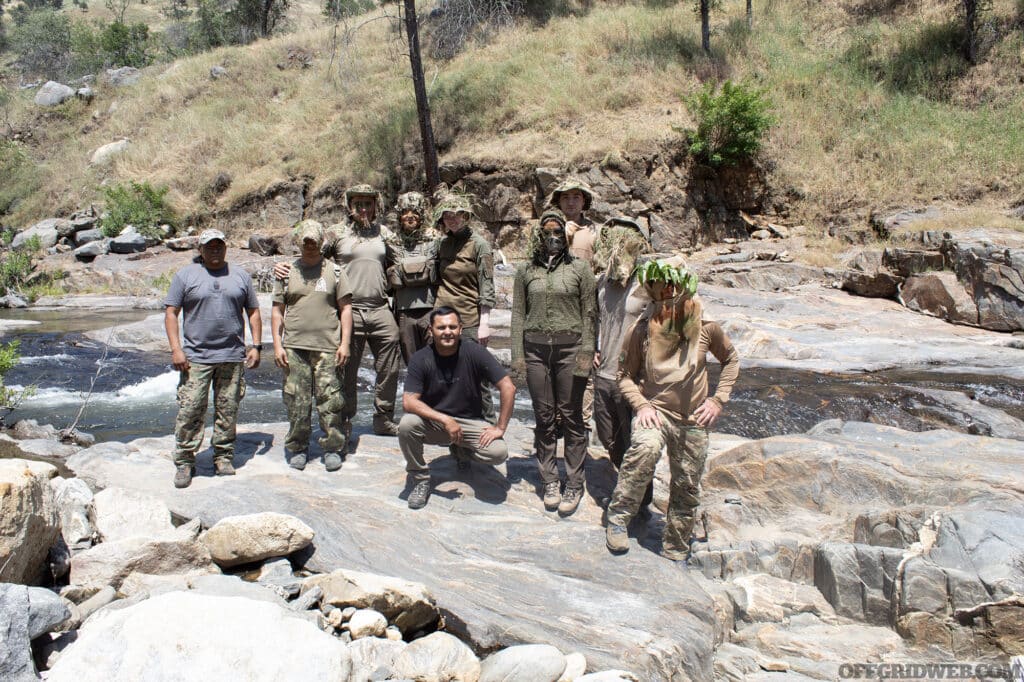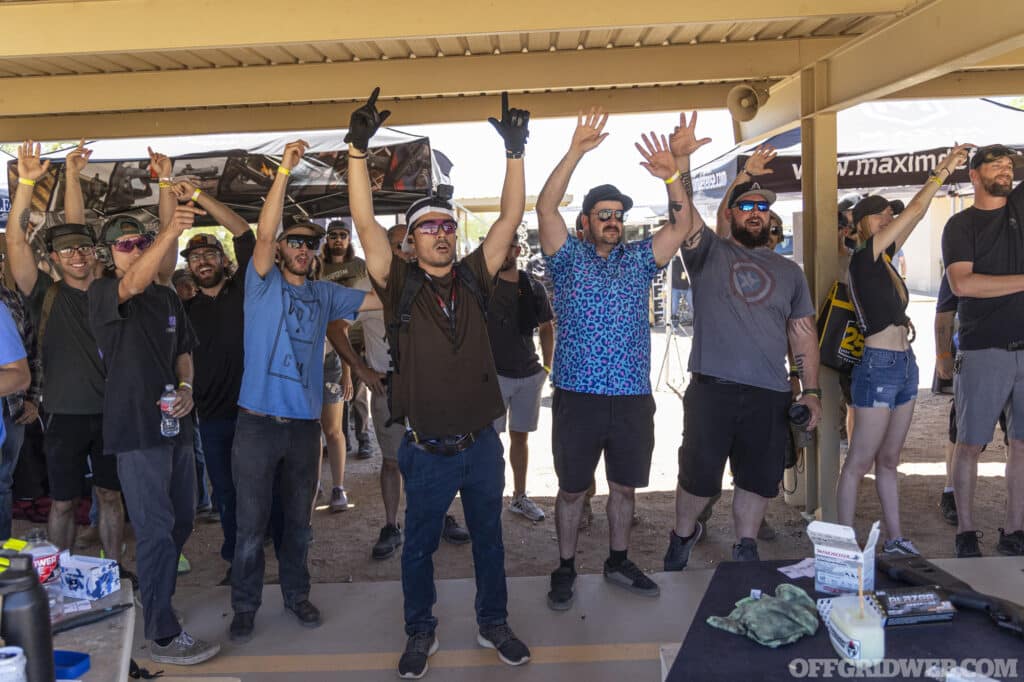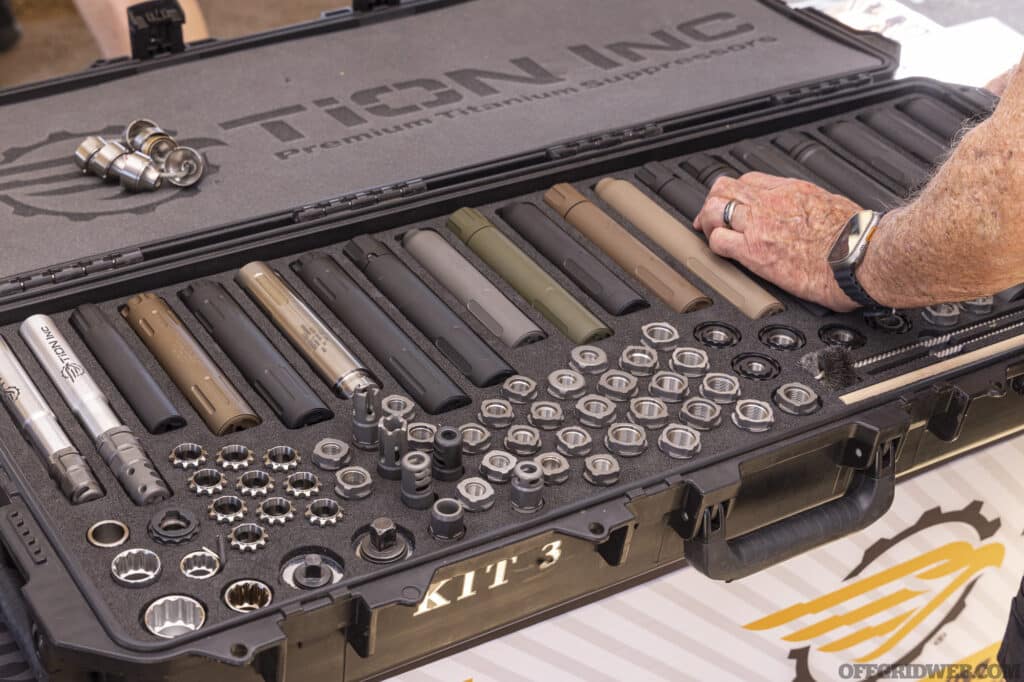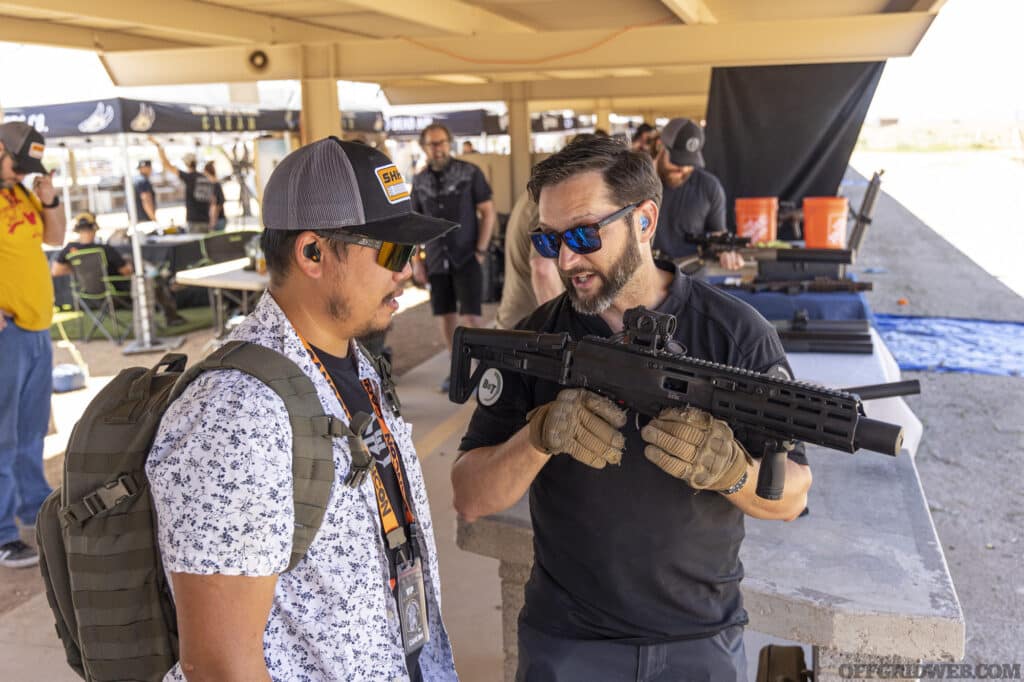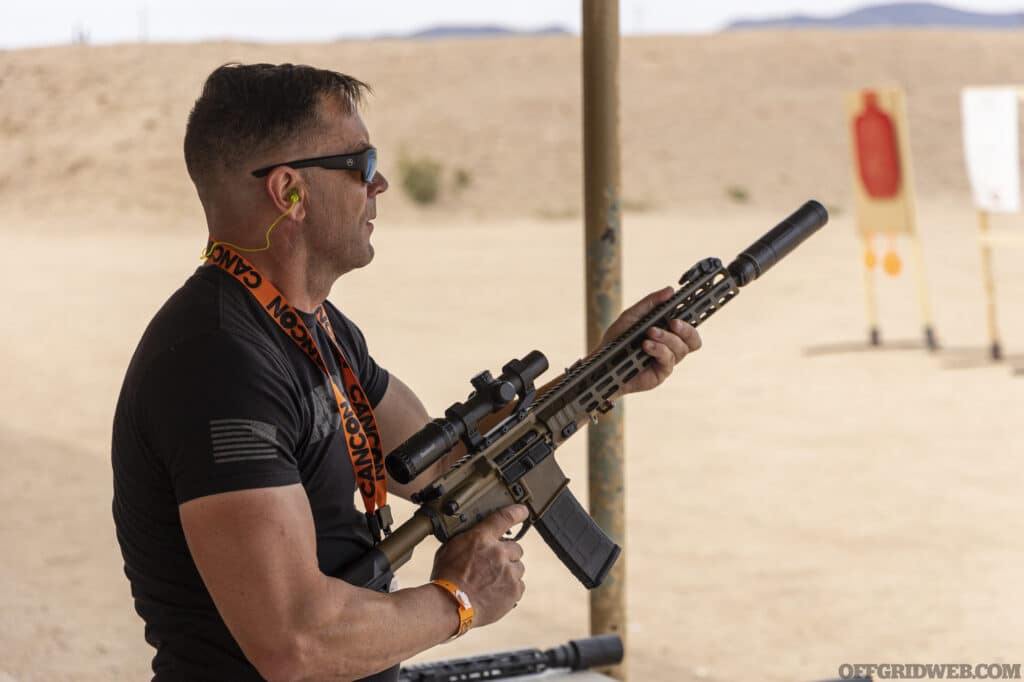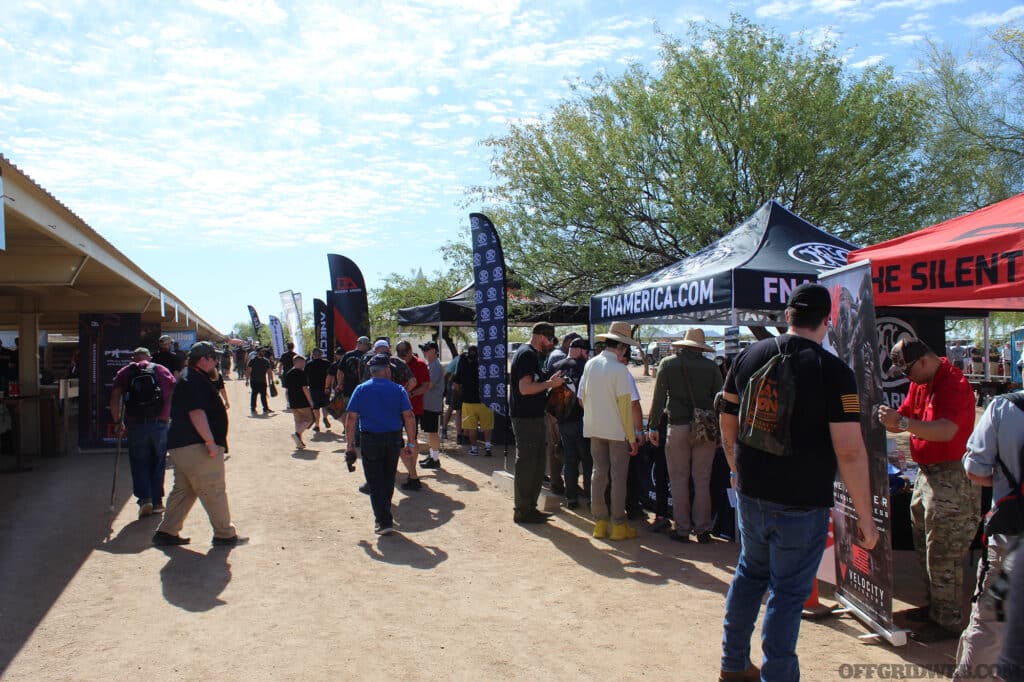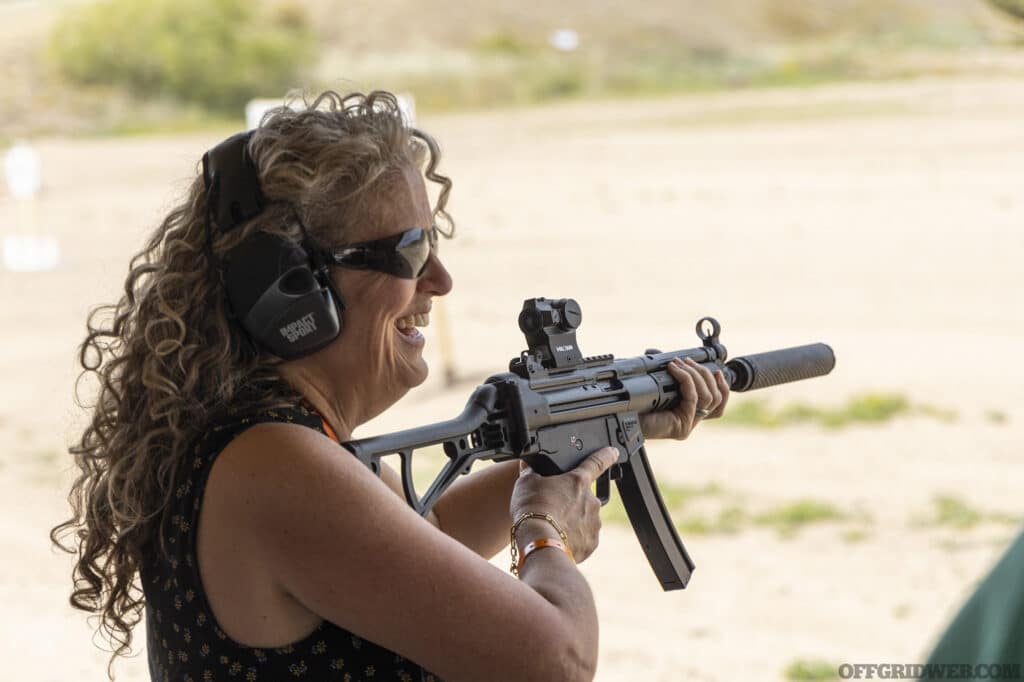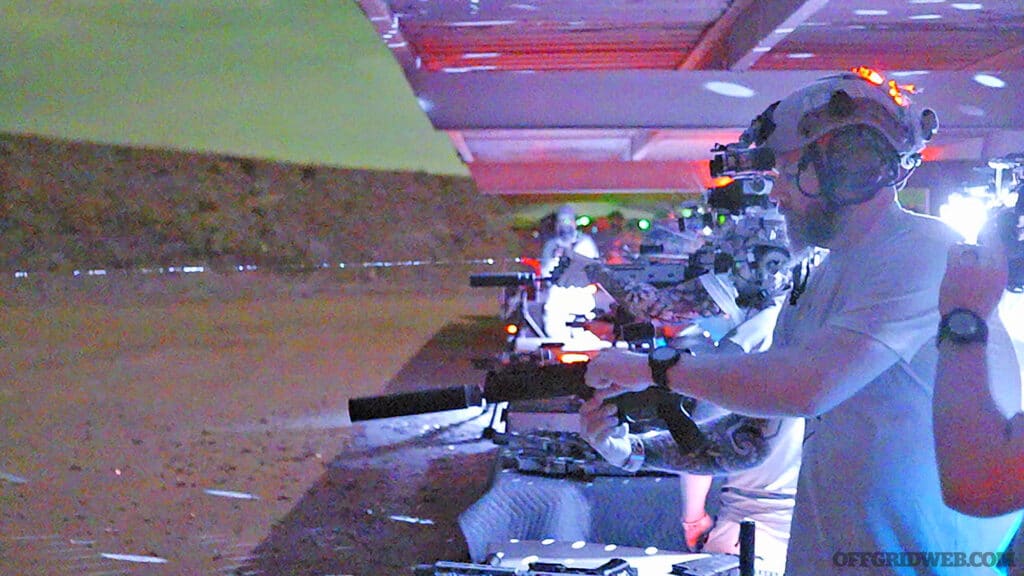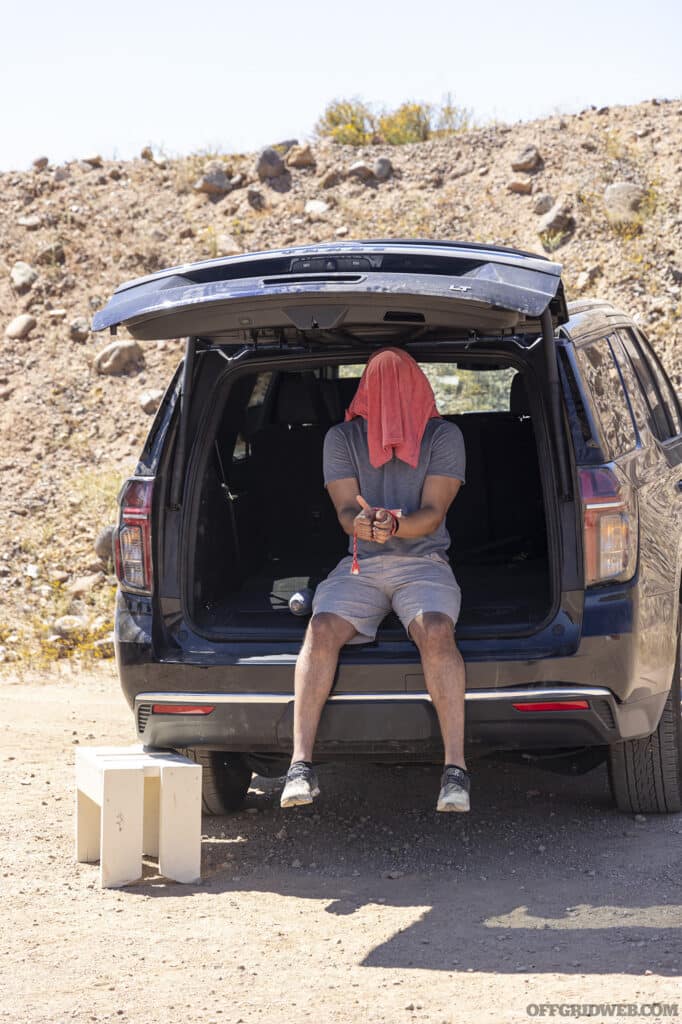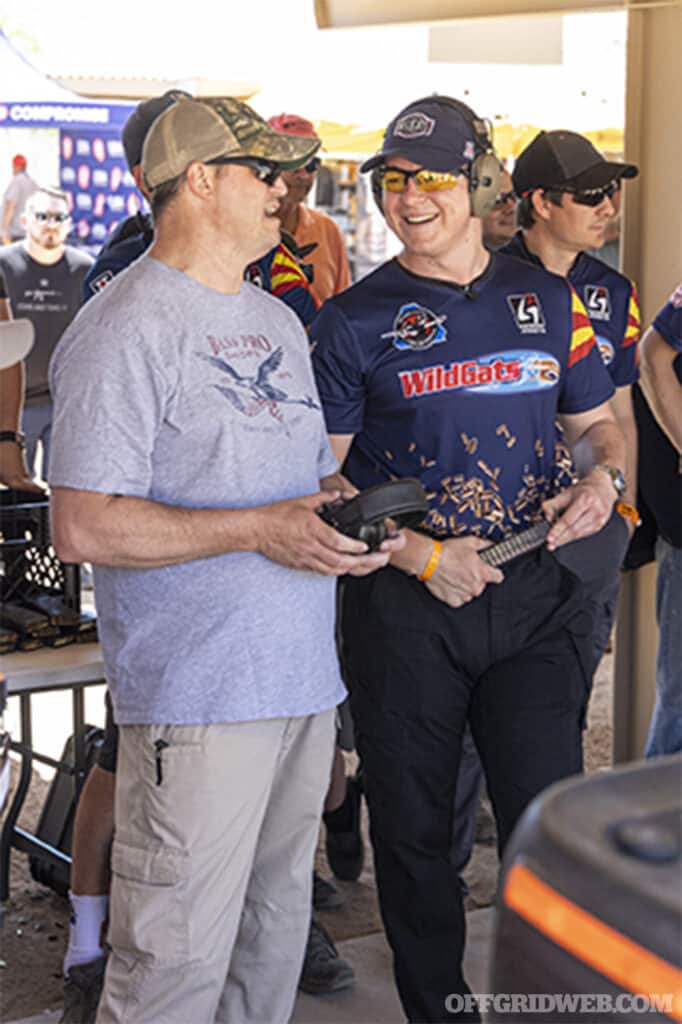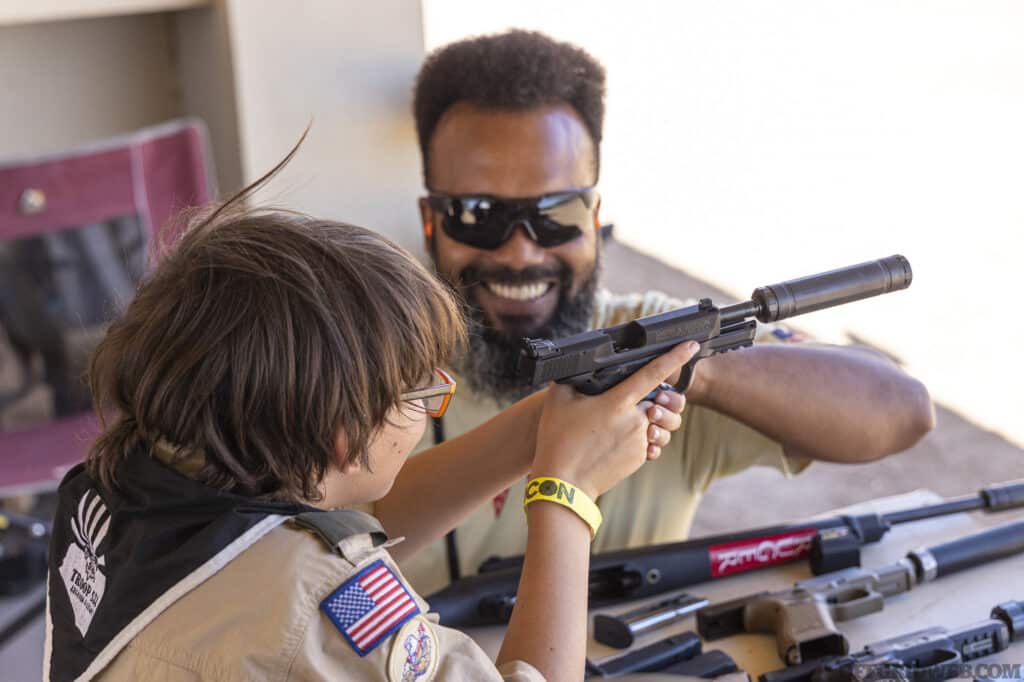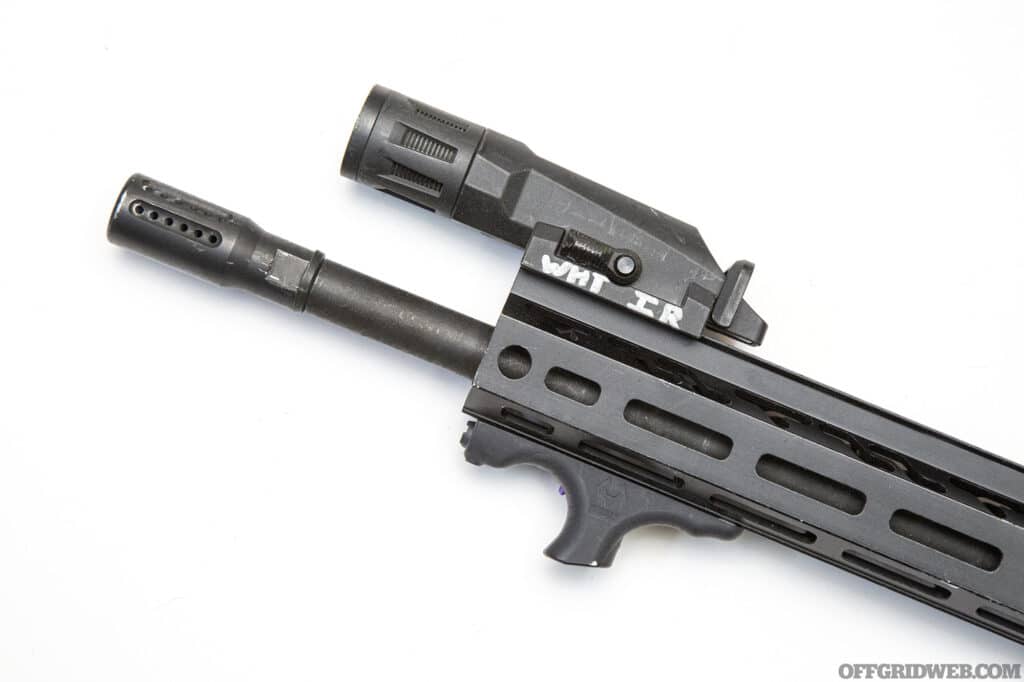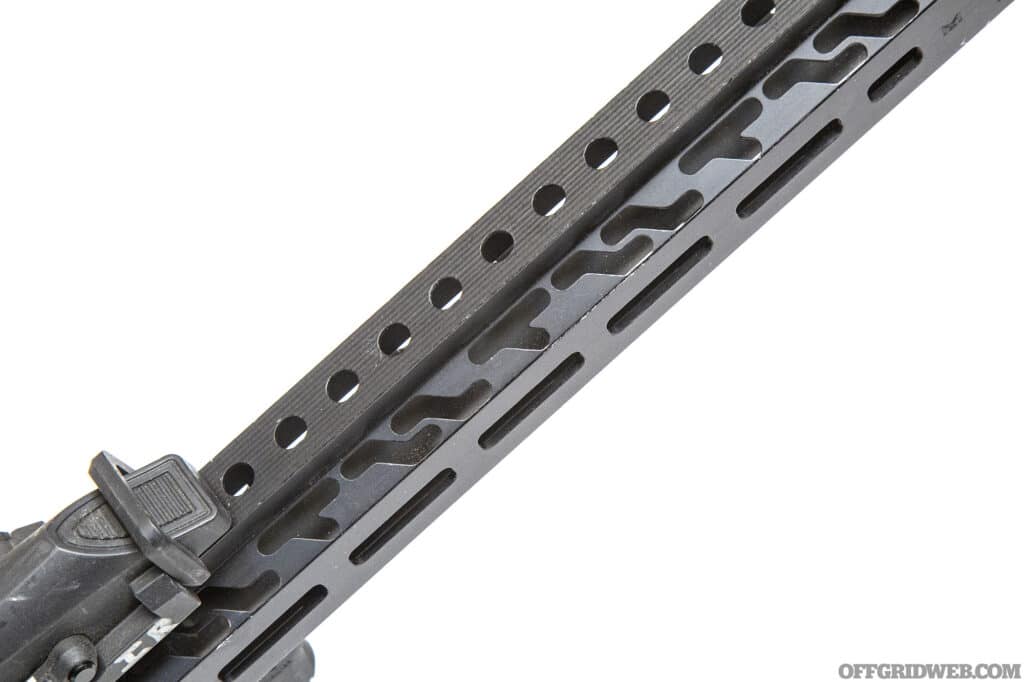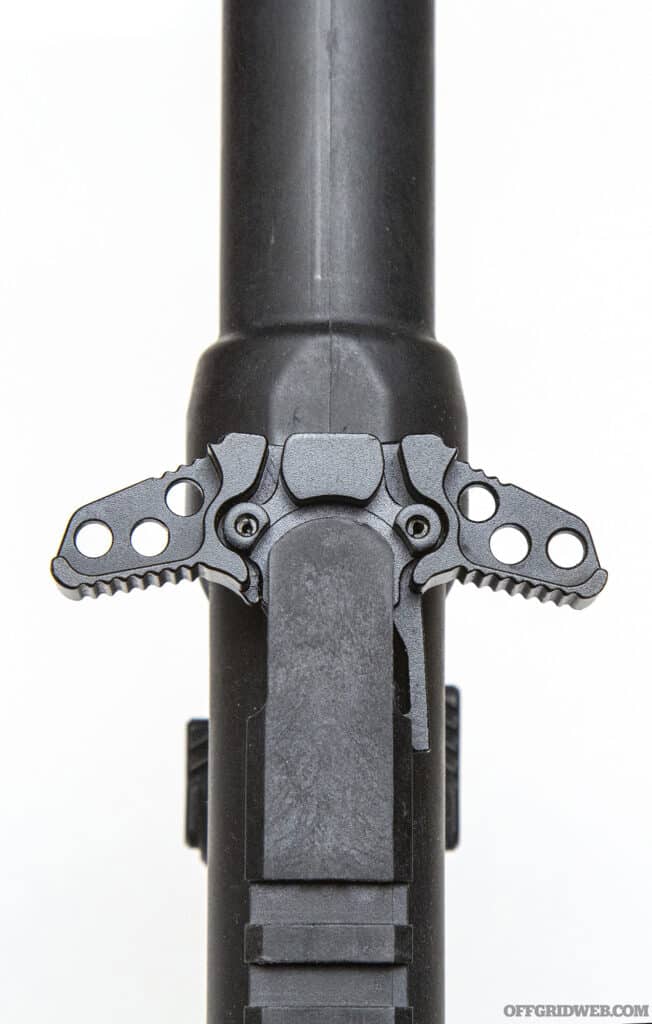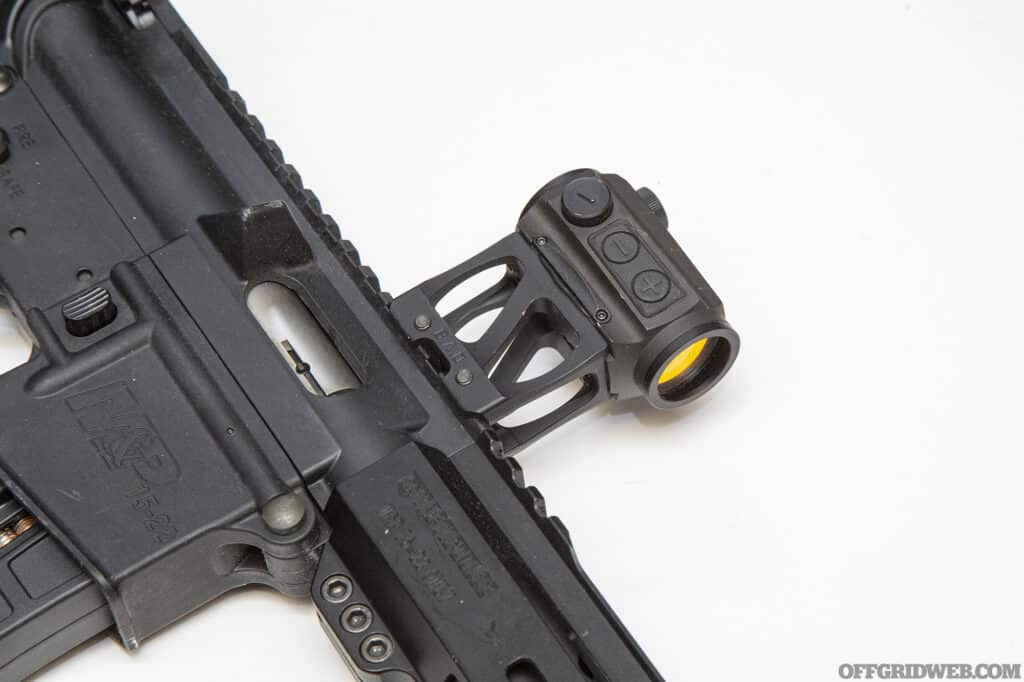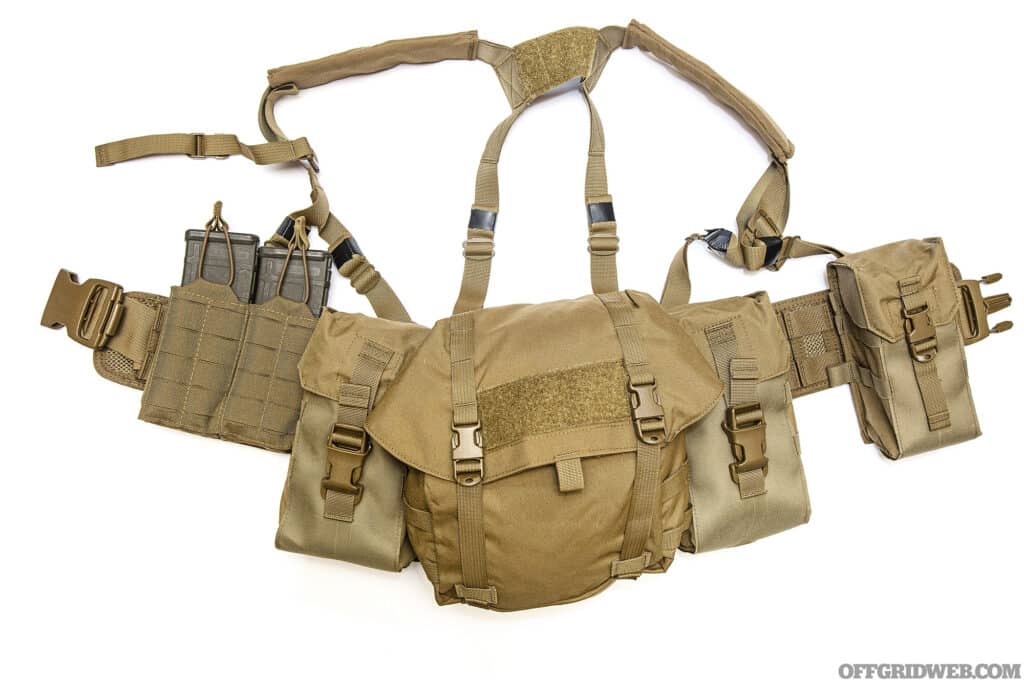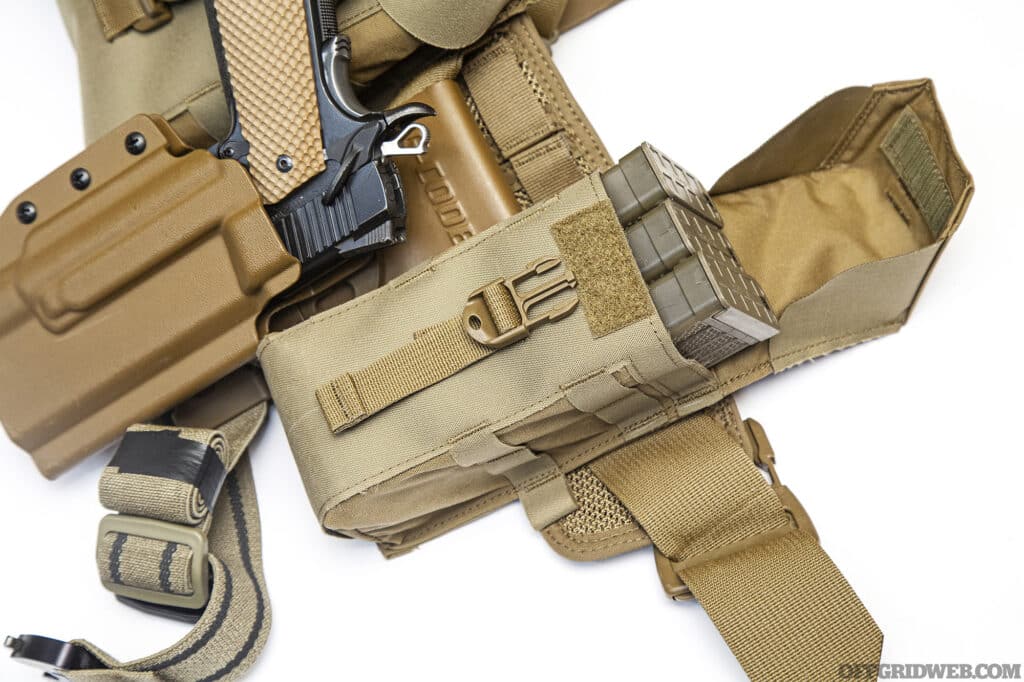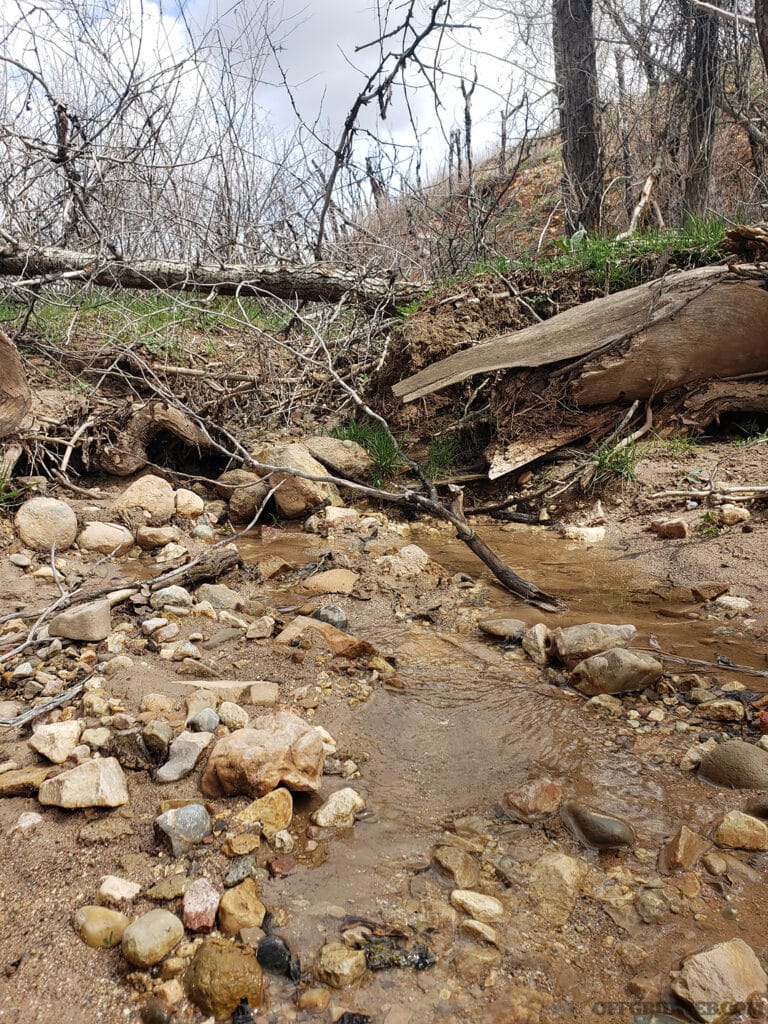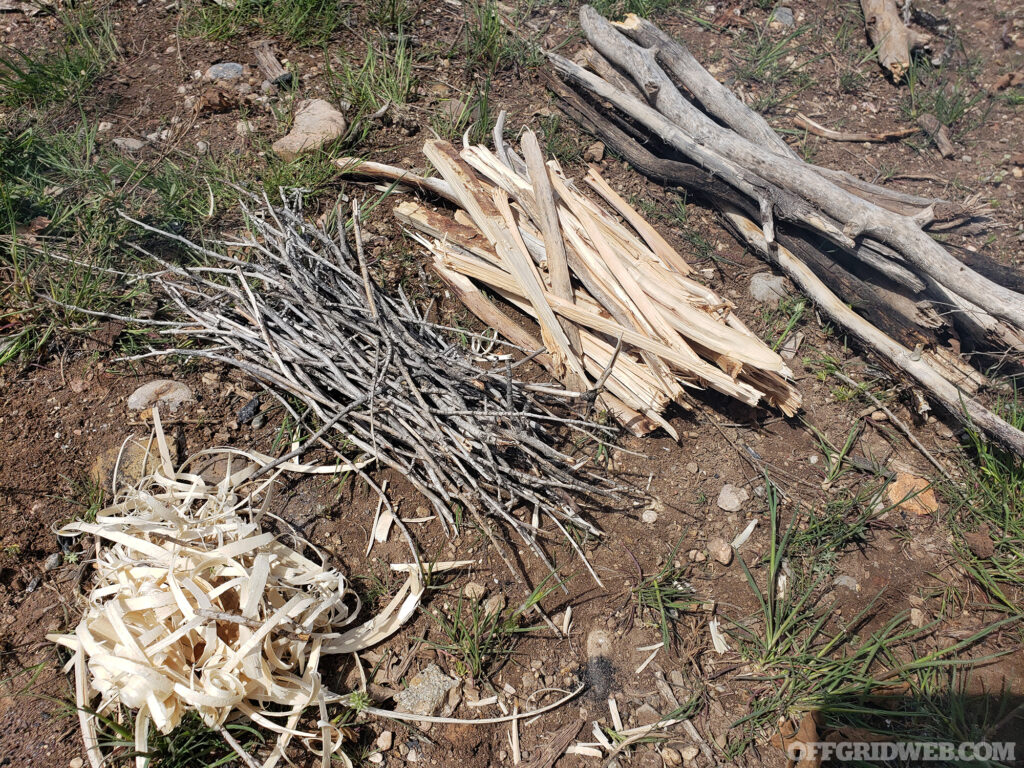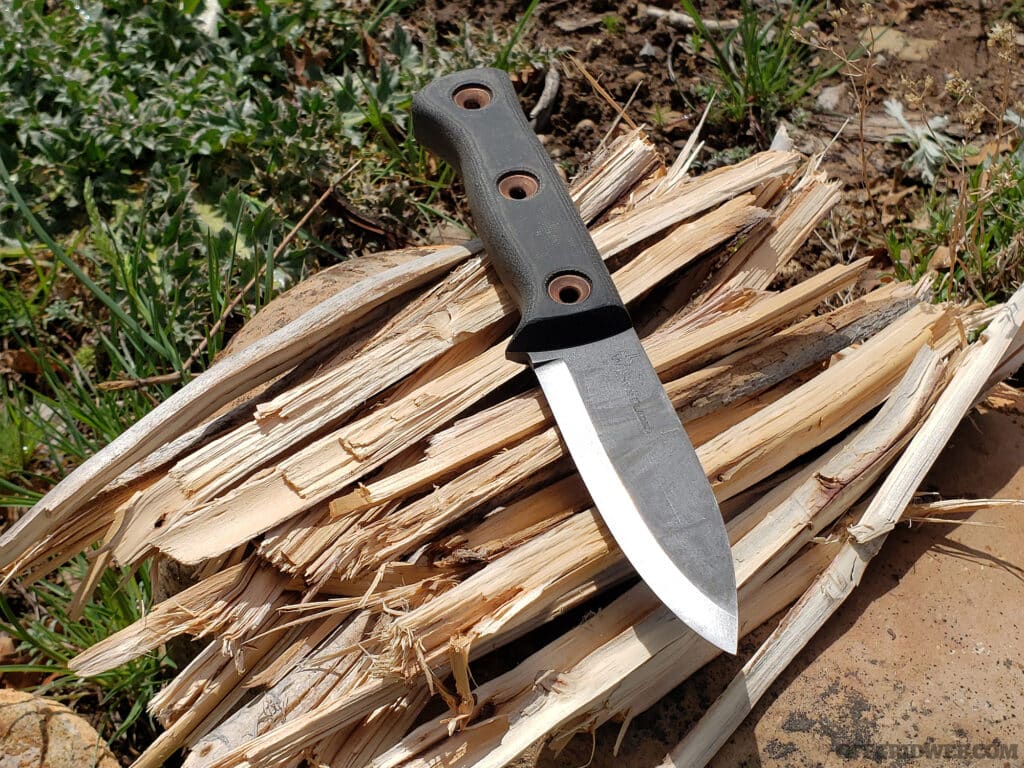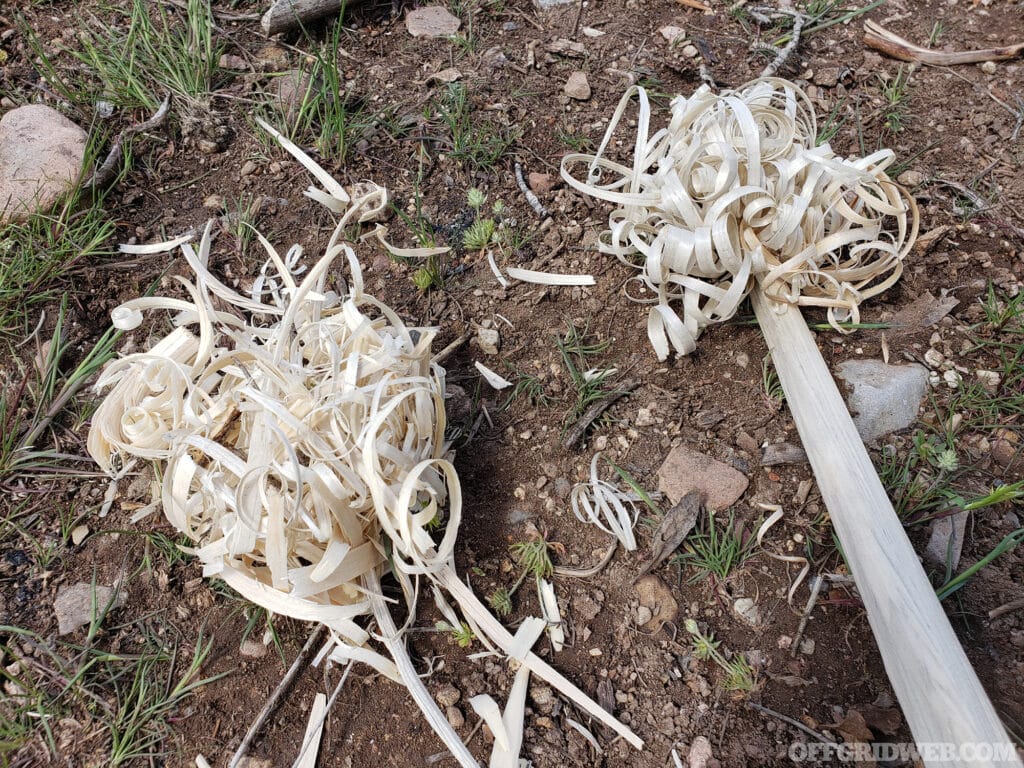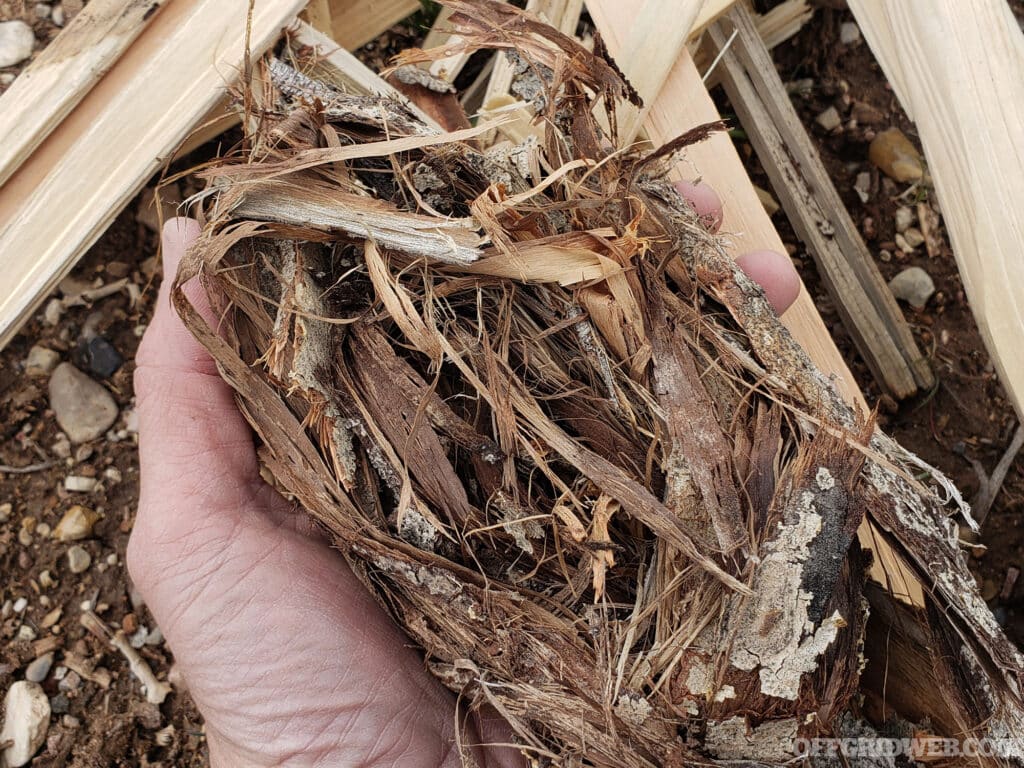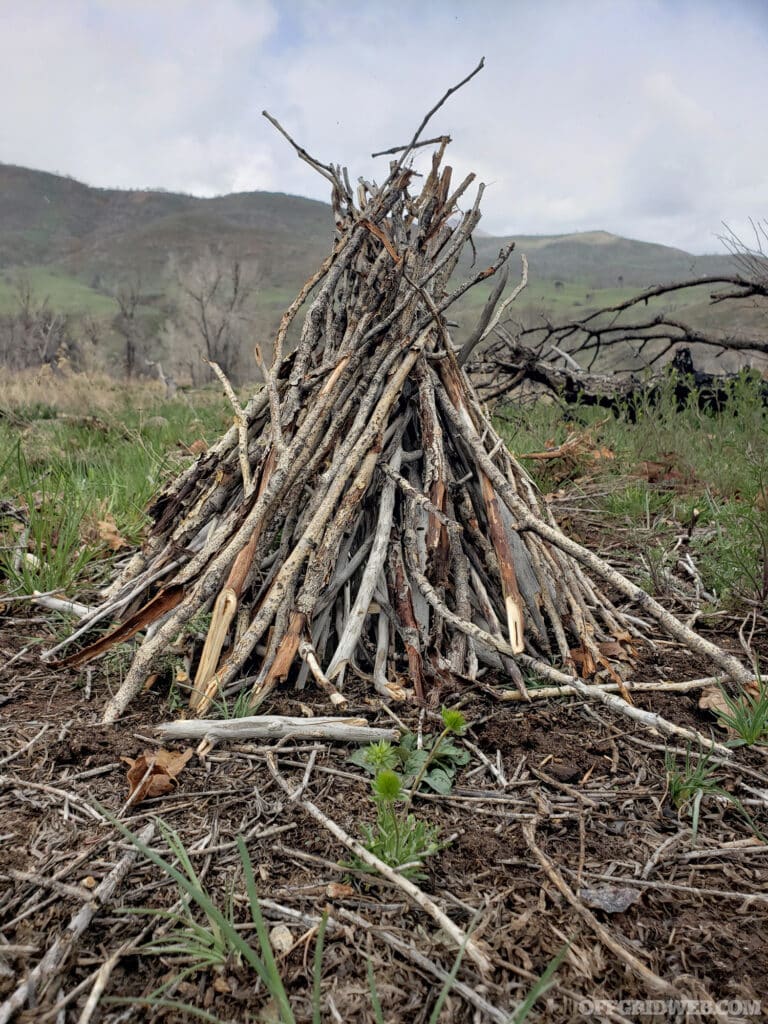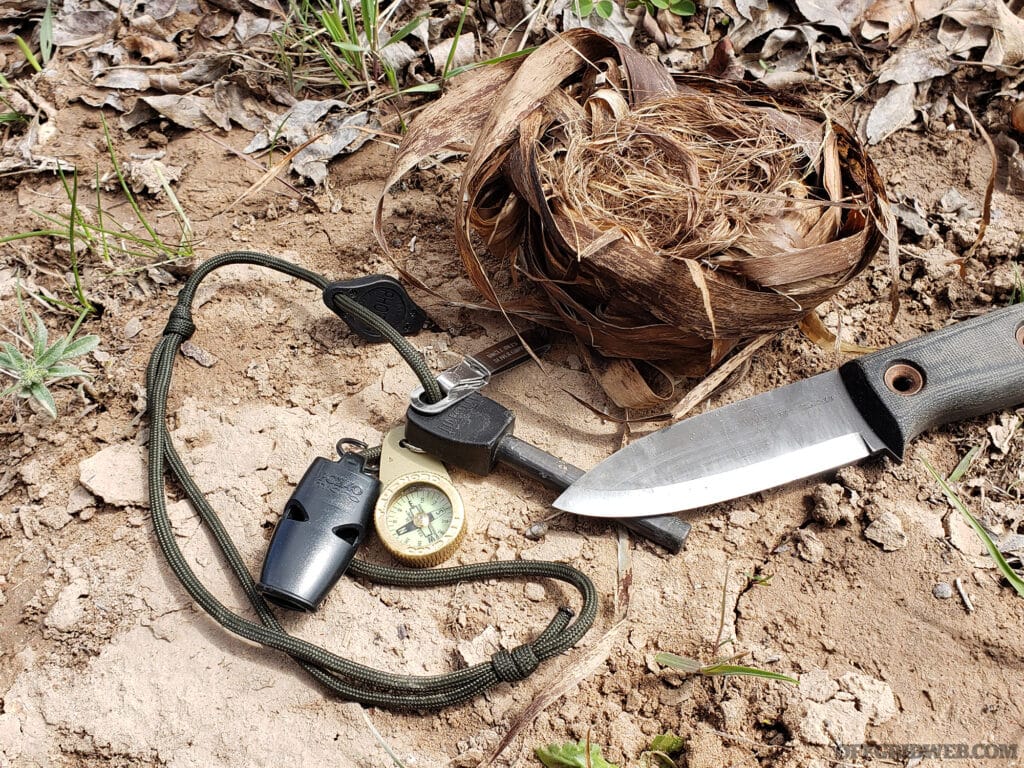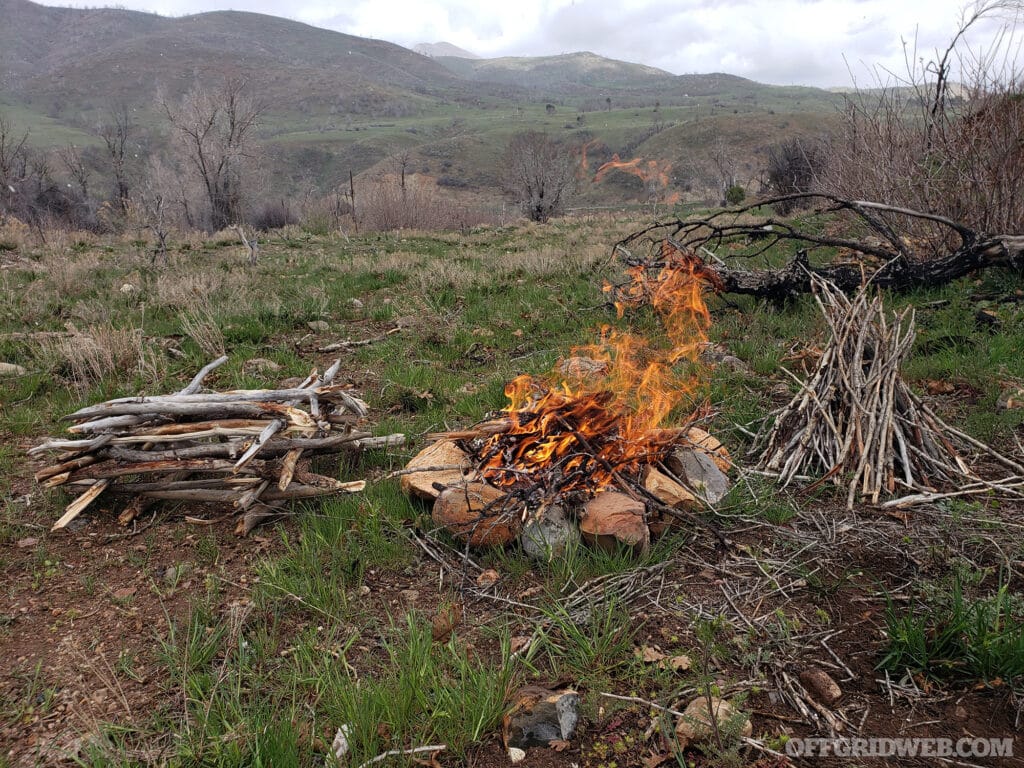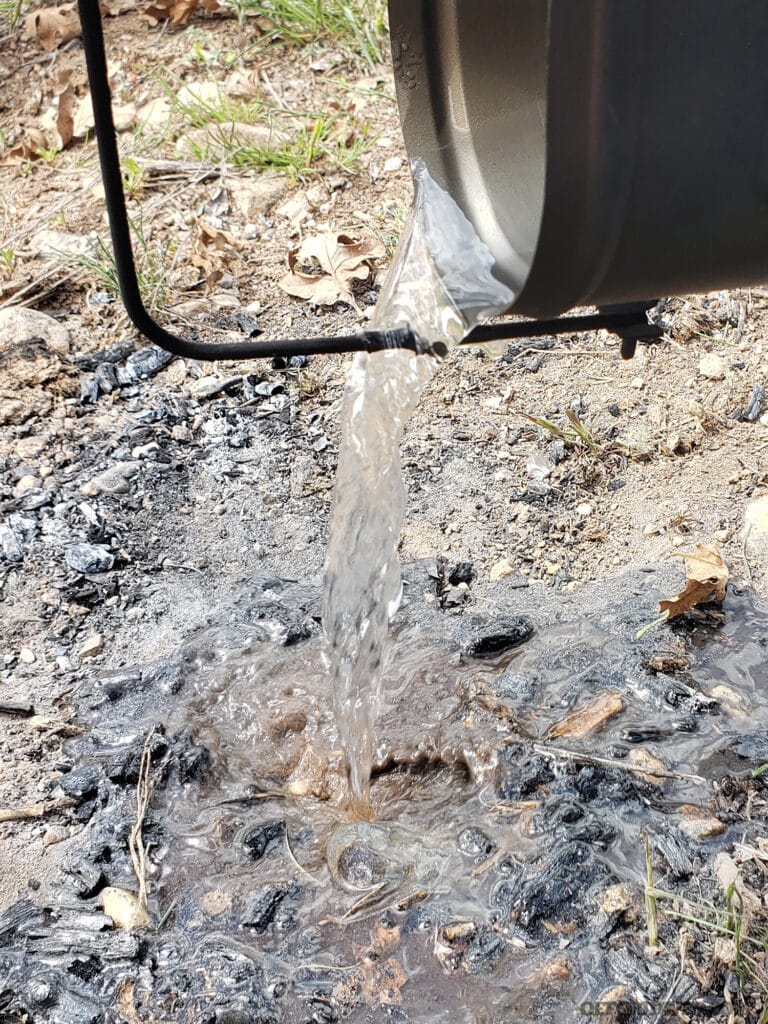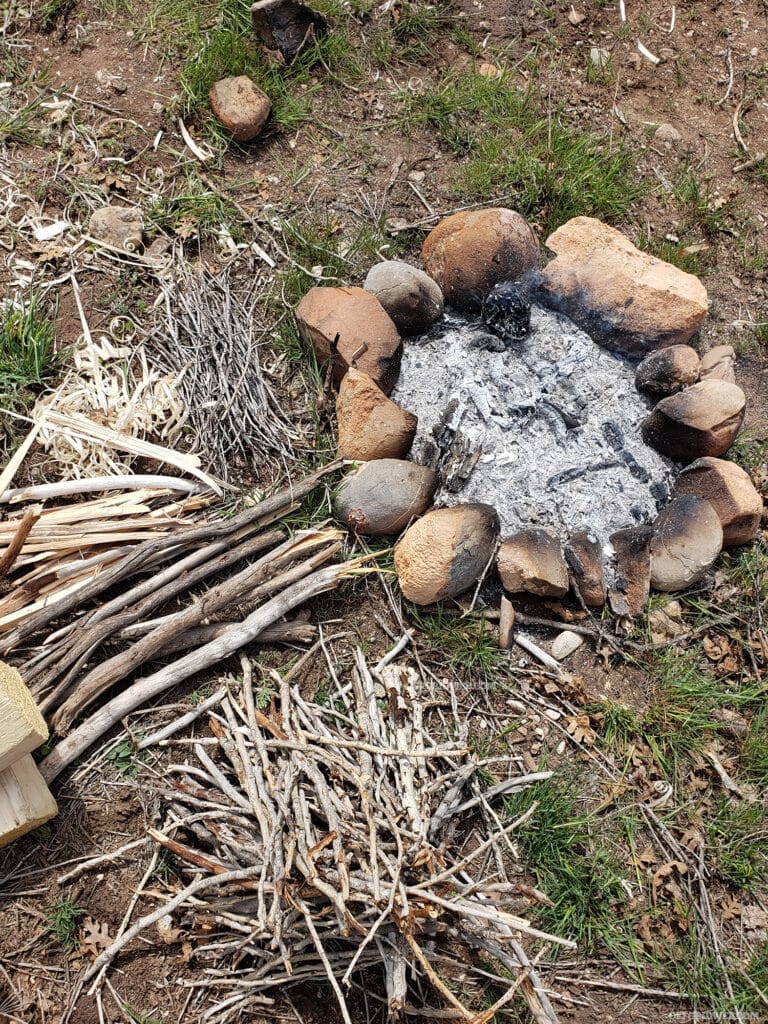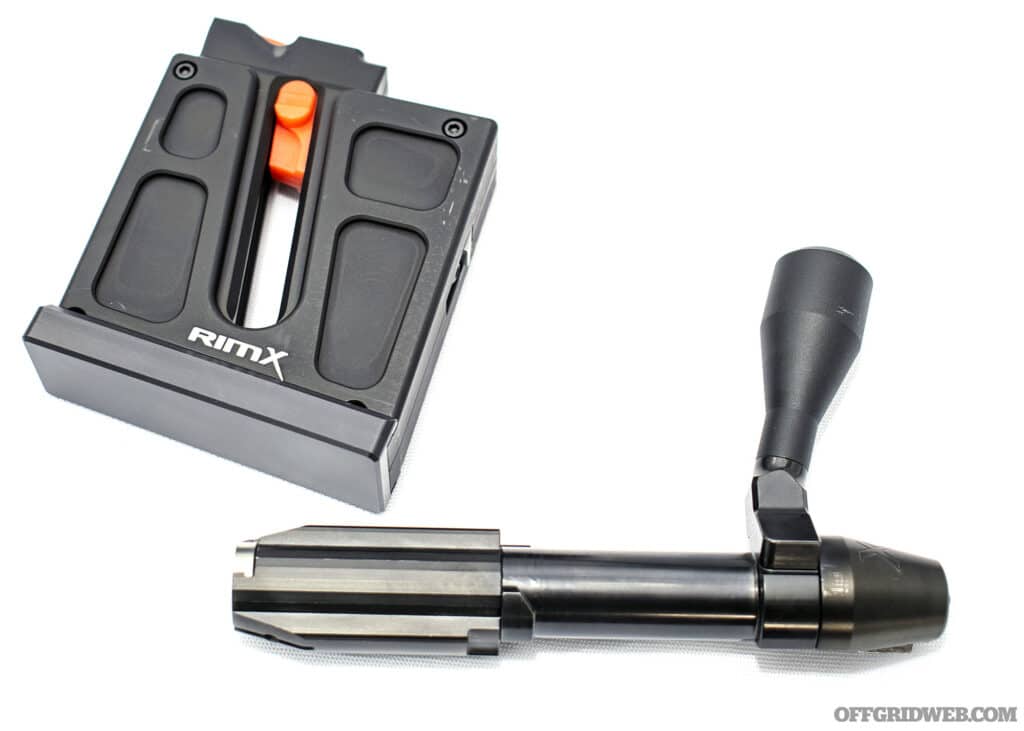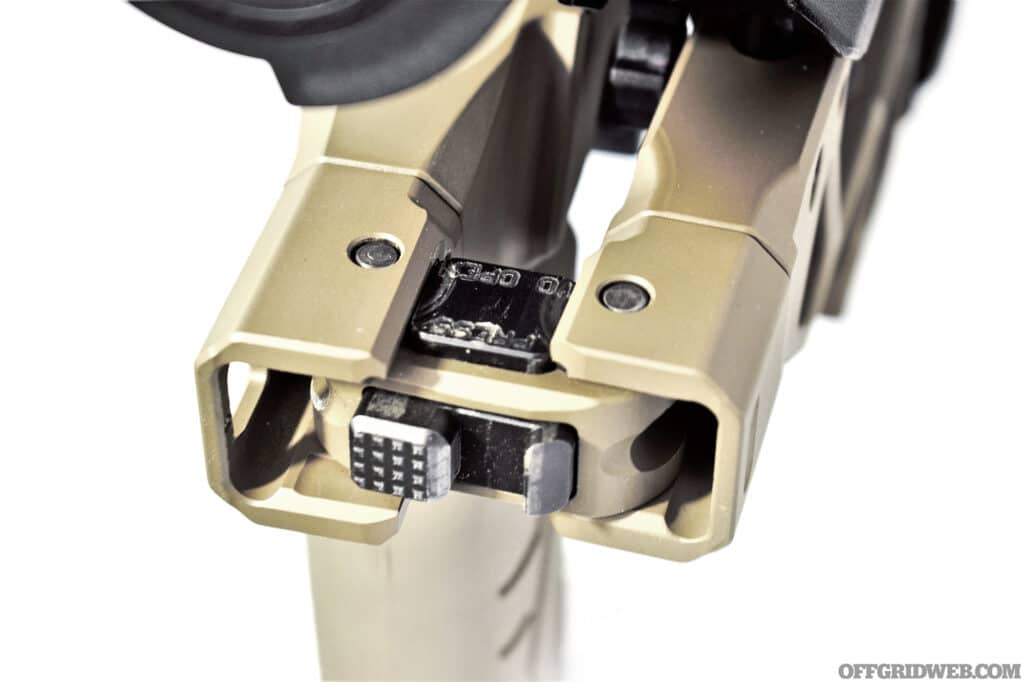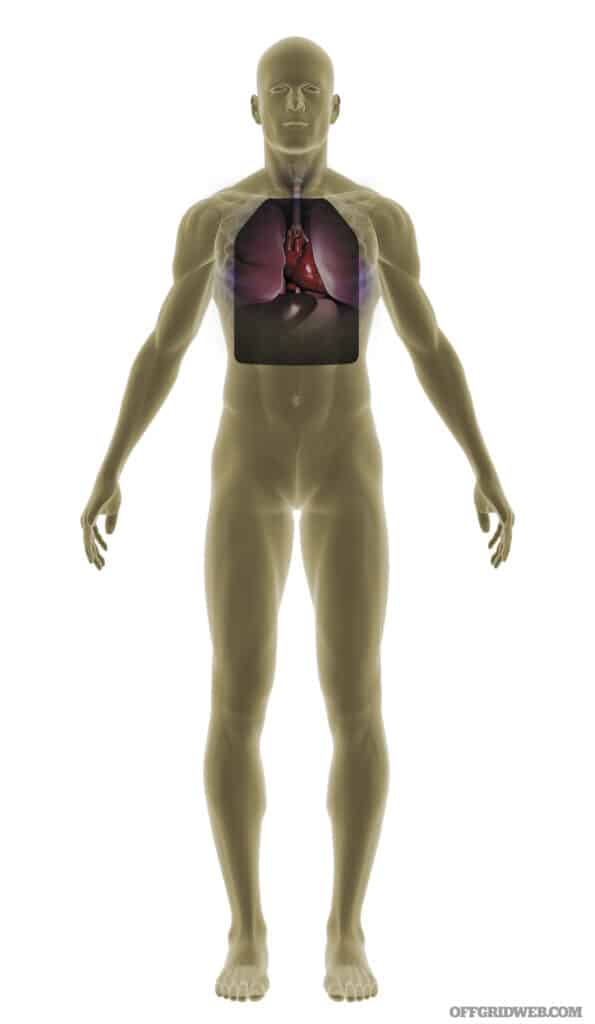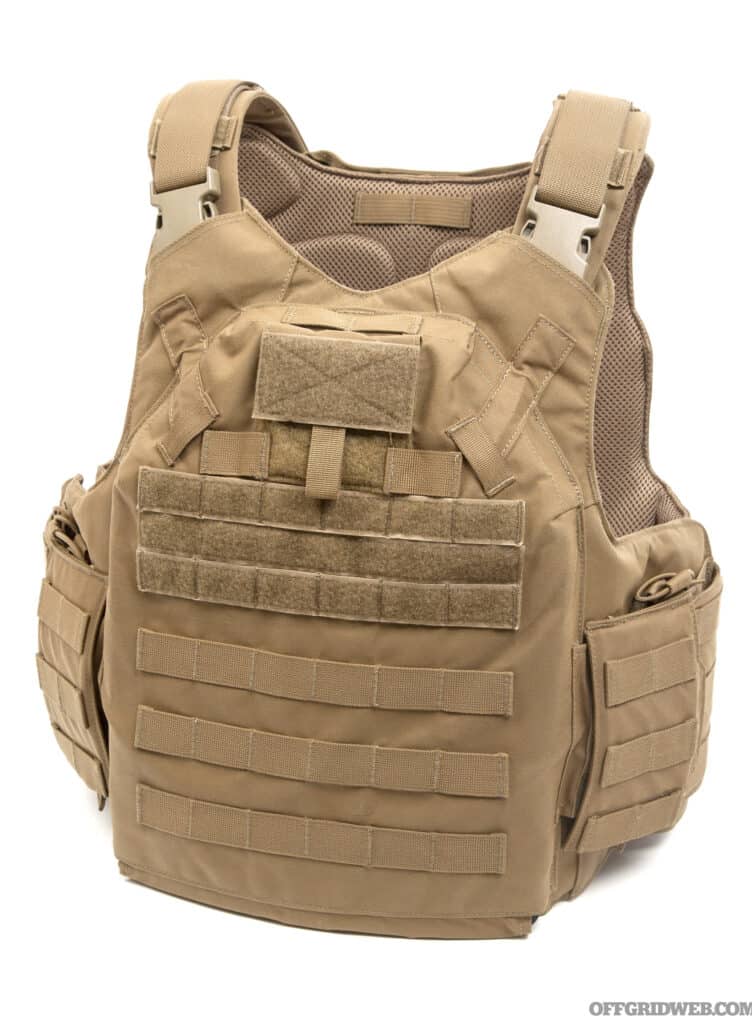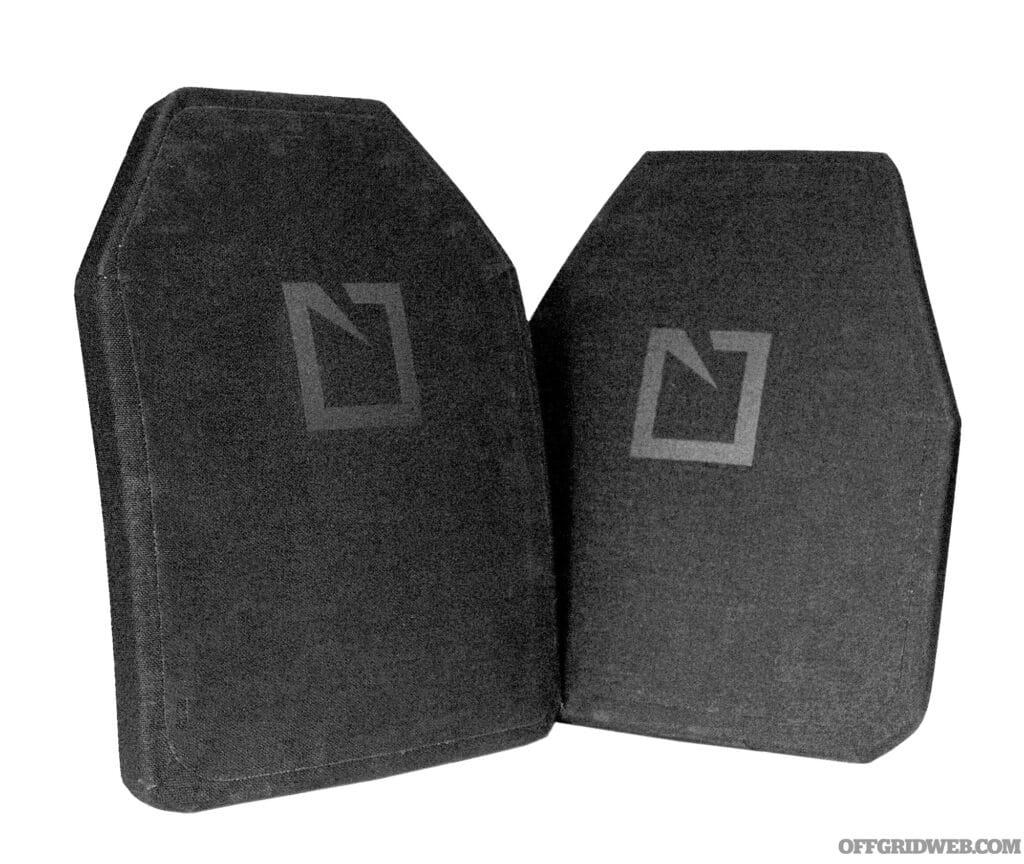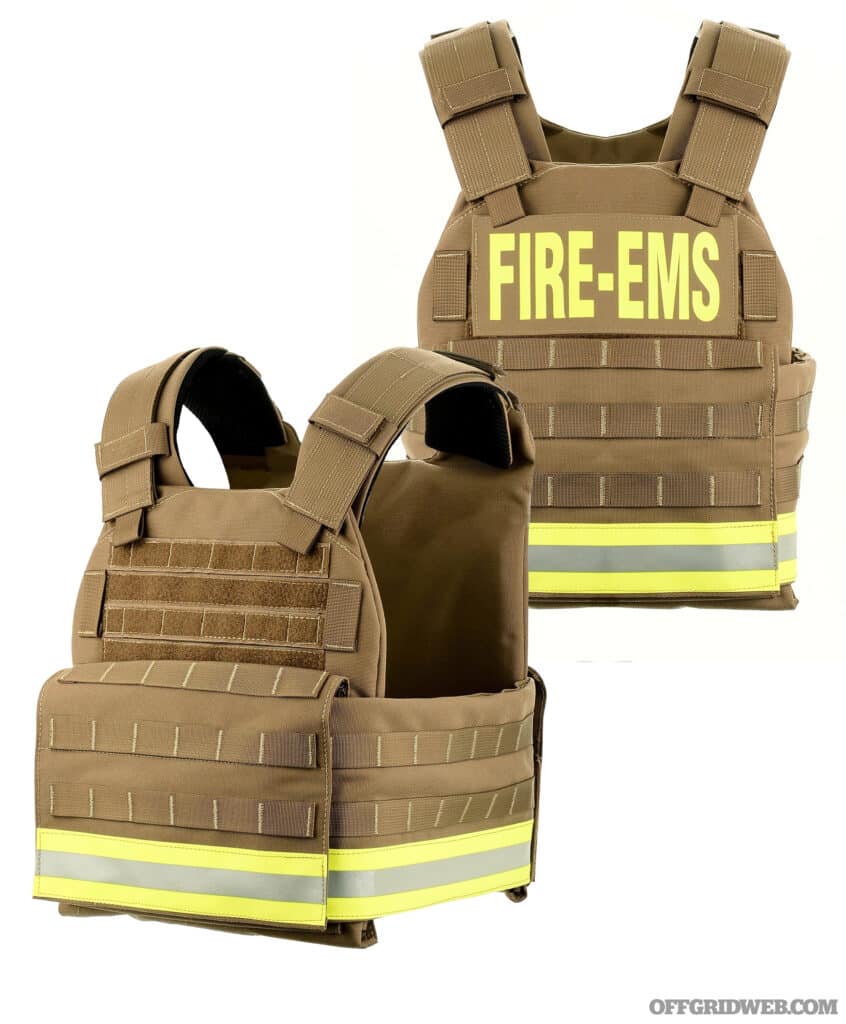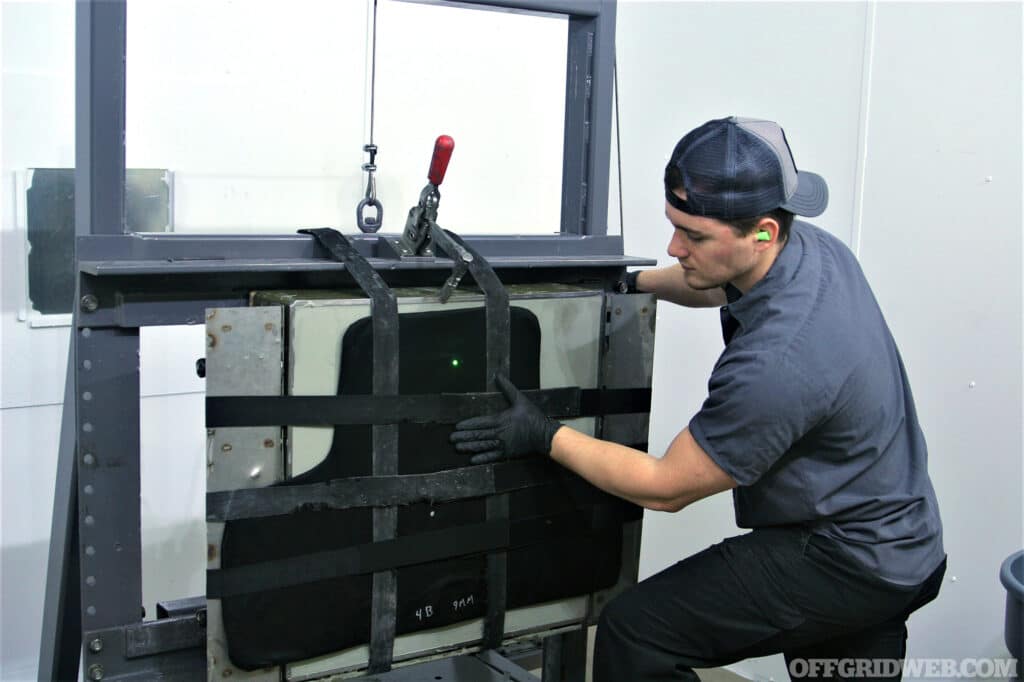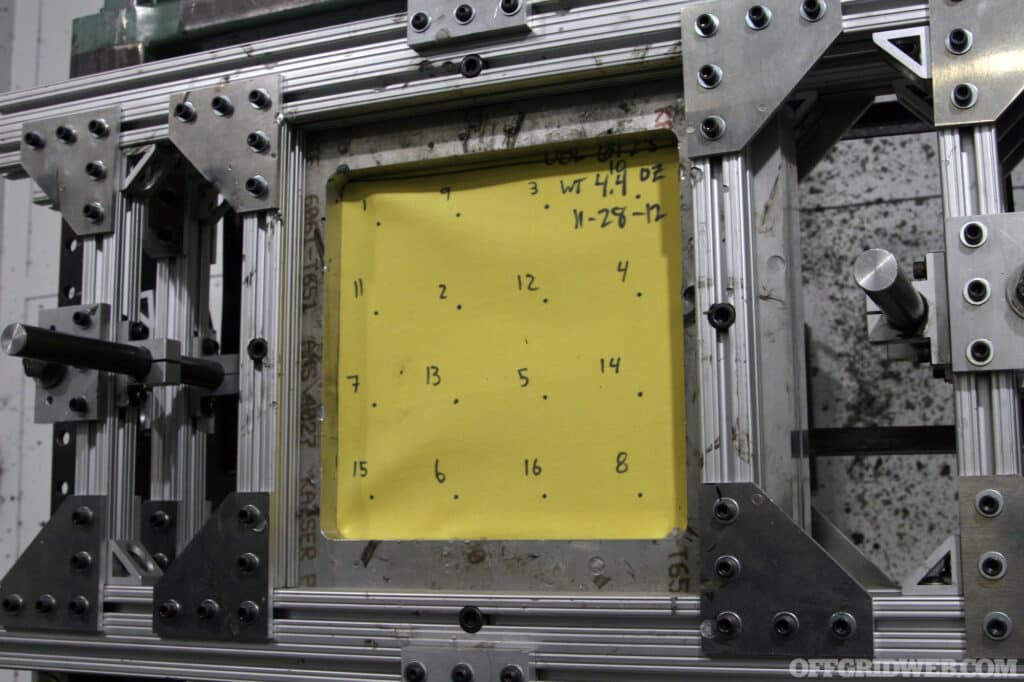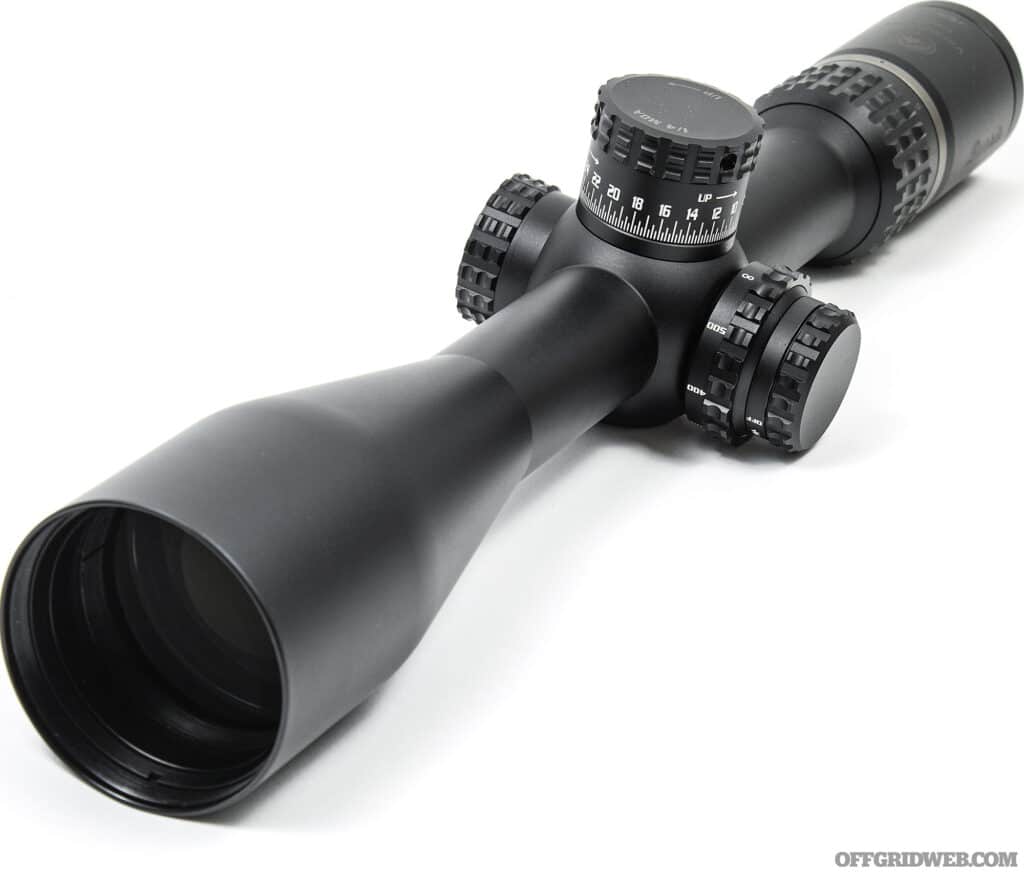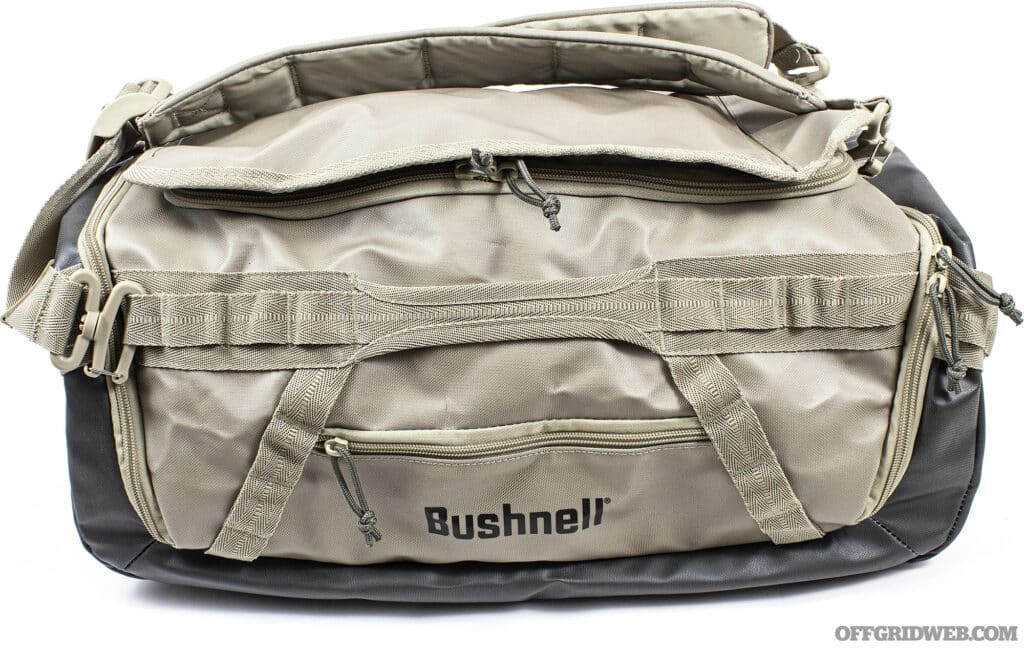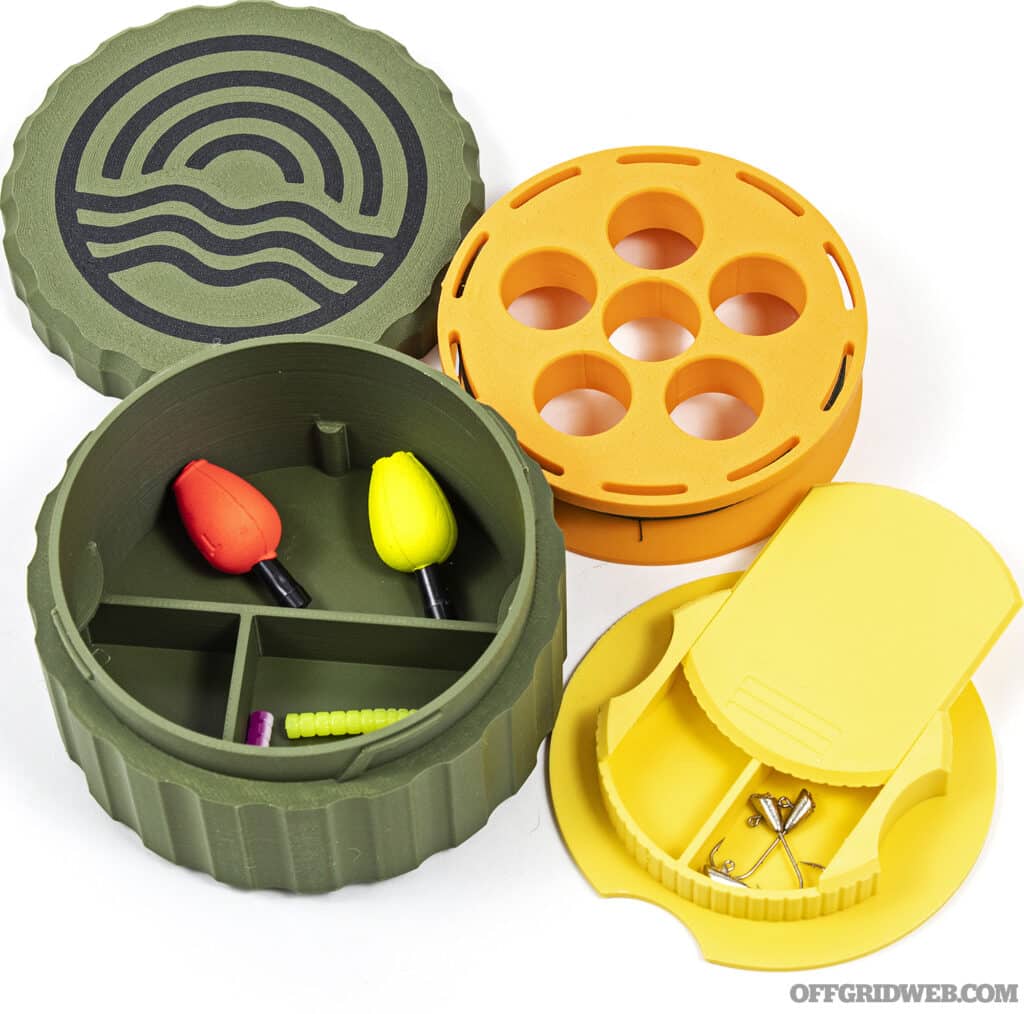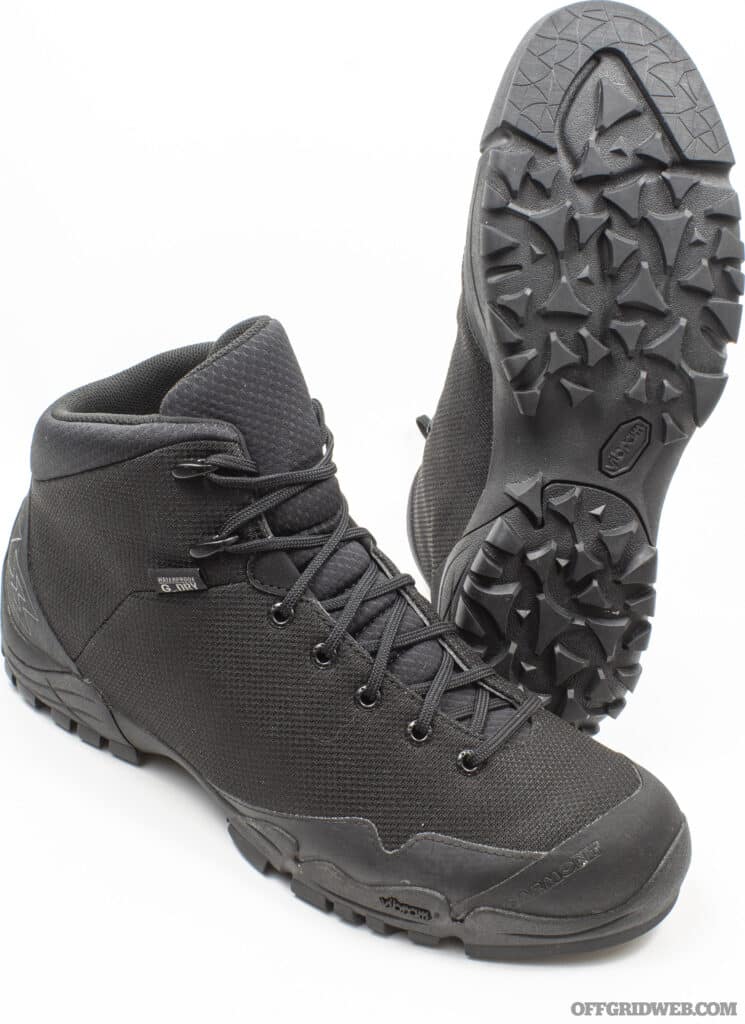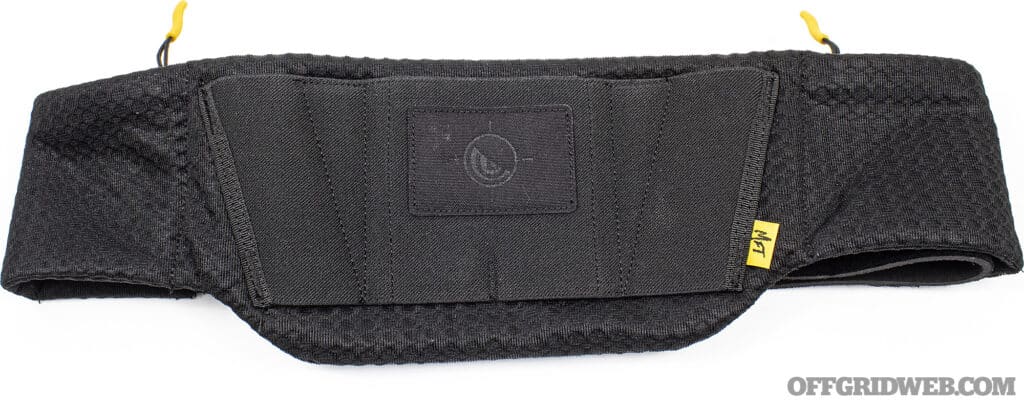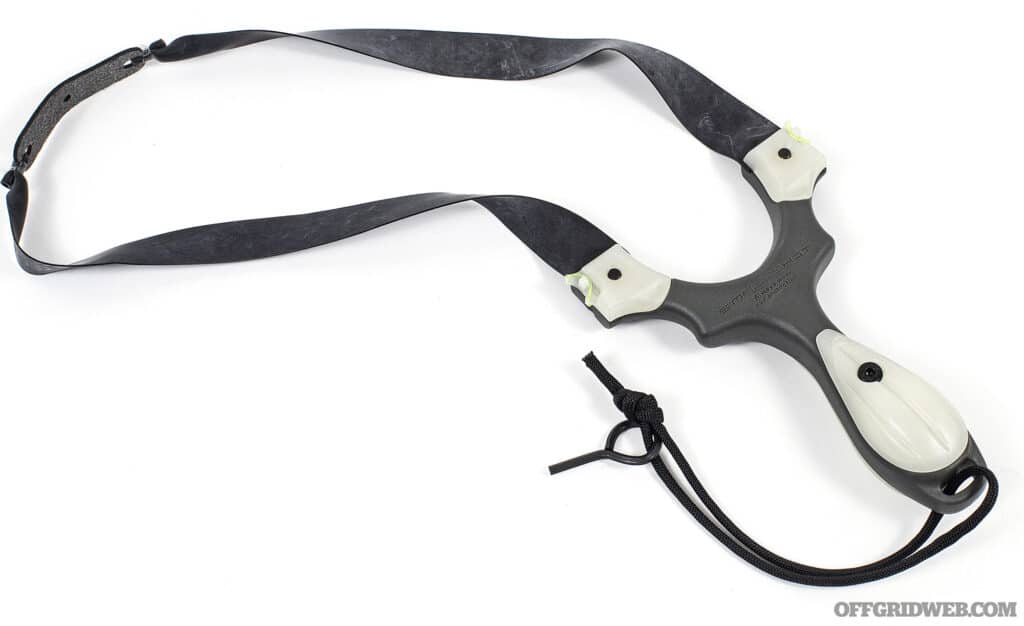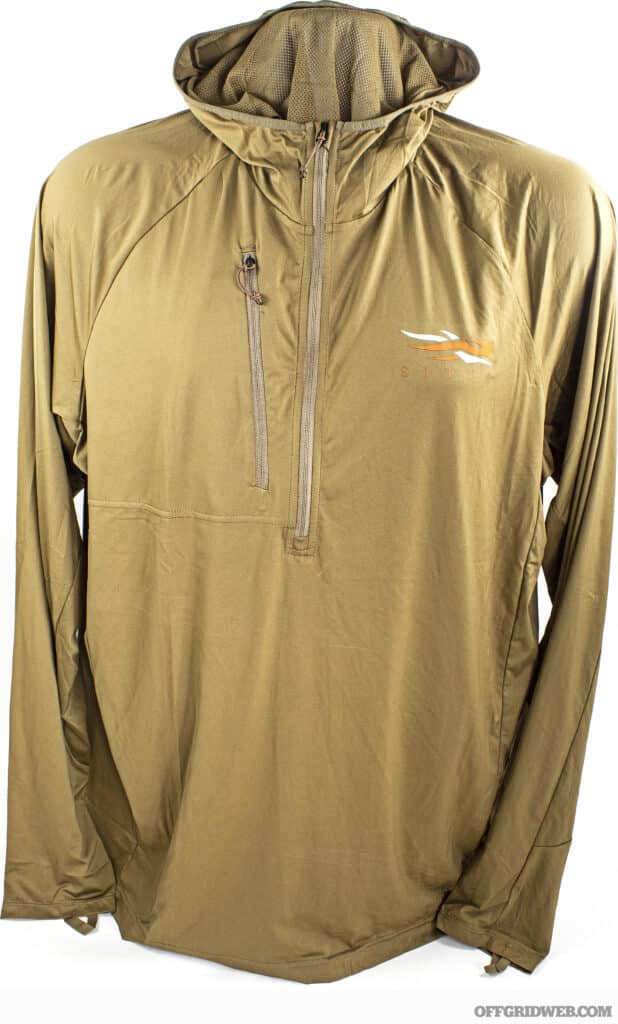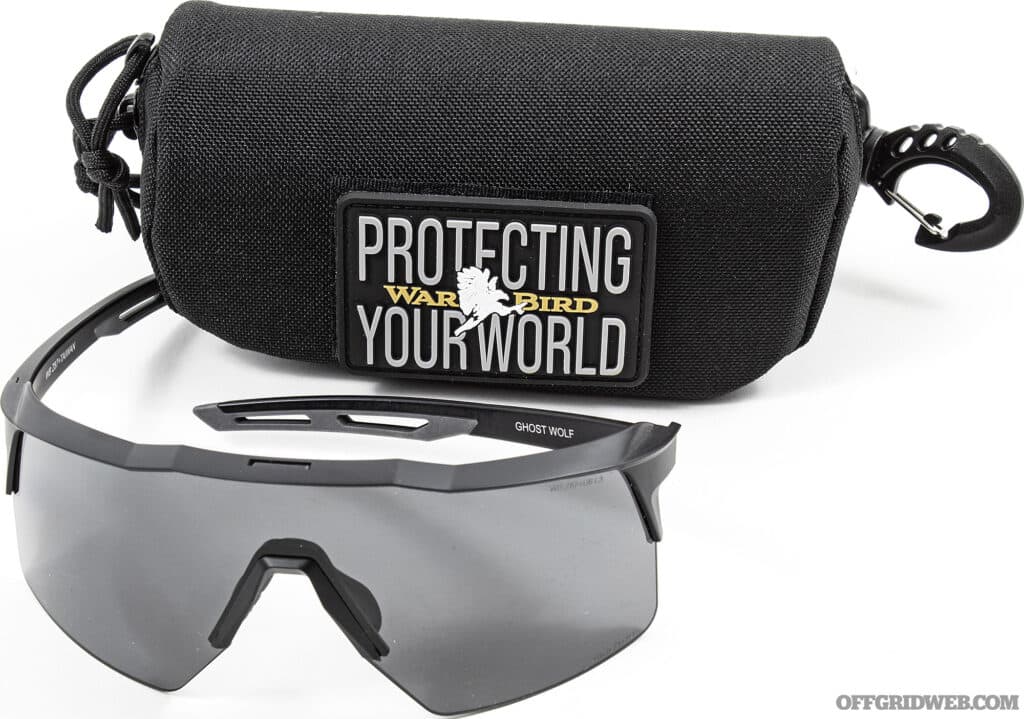For most Americans, the security of the southern border is a subject to debate from afar. While the ripple effects of drug smuggling and human trafficking reach throughout our nation, reading news articles and studying statistics doesn’t yield the same perspective as witnessing the problem first hand. Since his election in 2017, Sheriff Mark Lamb has been serving at the forefront of this complex situation. His jurisdiction — Pinal County, Arizona, which covers a large area between Tucson and Phoenix — is smack dab in the middle of one of America’s most active trafficking corridors, and the problem is only getting worse.
In February of 2023, Lamb testified at a House Homeland Security Committee hearing that human trafficking incidents in Pinal County had quadrupled during the previous two years, and that seizures of fentanyl pills had grown six-fold in the same time frame.
He said to the committee, “Our biggest frustration stems from being told by this administration and the media that there is not a crisis at our southern border, and the lie that our southern border is secure. Clearly, our statistics tell a different story.” A few months later, Lamb announced he’s taking the fight to Washington by running for U.S. Senate.
In addition to his strong stance on border security, Lamb has been an outspoken advocate of Second Amendment rights and the sworn duty of a sheriff to preserve the constitutional freedoms of fellow countrymen, leading to the nickname “The American Sheriff.”
As an extension of that viewpoint, during the COVID-19 pandemic, he openly defied a stay-at-home order issued by Arizona Governor Doug Ducey, refusing to arrest or cite owners of businesses that remained open.
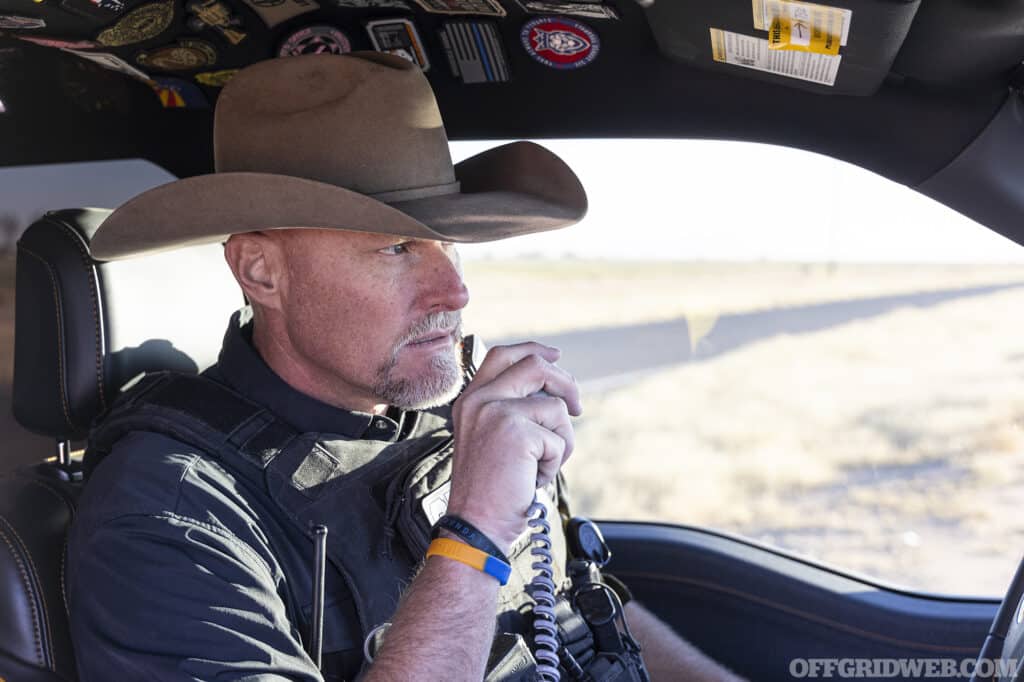
We met Sheriff Lamb one morning outside a U.S. Border Patrol field office near Interstate 10 and hopped into his truck for a brief ride-along. After cruising around the county for a few hours, we returned to his office and sat down to discuss his background, views, and senatorial ambitions to “yank the chain back on the federal government.”
Interview with Sheriff Mark Lamb
RECOIL: Tell us a little bit about your upbringing.
I was born and raised in Hilo, Hawaii — the Big Island. We lived there until I was 11 years old, then we moved to the Philippines and lived there for another year. Everybody asks, was my dad military? No, he was a graduate of Thunderbird, which is an international business school here in Arizona. He loved international business. So, we lived abroad and then had to regroup, and came back to Chandler, Arizona, which is where my dad was from. I went to junior high and high school in Chandler.
While I was in high school, my family moved to Panama, Central America. So, I spent a lot of time every summer there, and spent Christmases there. I was in Panama when the United States invaded during Operation Just Cause in 1989, rolling into ’90. I stood on guard with a gun out front of my building for multiple days. Then, I served a mission for my church in Buenos Aires, Argentina.
I spent a lot of time outside of the United States, so much so that the first chapter in my first book I wrote was “Welcome to America.” As kids, it really gave us a good understanding of what it’s like to live abroad and what poverty really looks like. You gain a real appreciation, a deep love for America and the freedoms that we have.
What led you to pursue a career in law enforcement?
It was happenstance. I never thought about being a police officer, didn’t grow up thinking I wanted to be one. Nobody in my family or my wife’s family is a police officer.
I was 33 years old and had my own business. I knew I was missing something in my life. Both my wife and I knew that I could be doing more, needed more purpose. So, my neighbor asked me if I wanted to do a ride-along one night. I never would have guessed that I would find my purpose on that ride-along, but I went anyway.
It was at the Salt River Pima-Maricopa Indian Community, on the Indian Reservation near Mesa, Tempe, and Scottsdale. It was a graveyard shift, and I remember that on one of the calls — I tell this story all the time — we went to the house of a guy who found a 20-year-old with his 14-year-old daughter. They got into a little physical altercation, the kid runs out the back, and we show up. He lets me out of the car, and I’m armed with a flashlight and courage out there, just looking for this guy.
On the reservation, you might have a house and then nothing behind it. At this particular house, there was an old, abandoned travel trailer out in the desert behind the house. I walk up to it with the flashlight, look in the window, and I see what I think is a quarter-sized area of skin amongst all the trash and clothes and debris in this trailer. I tell those guys, hey, I think he’s in here. Sure enough, they go in, tase him, dig him out, and put him in cuffs.
The next morning, I woke up my wife and said, “I’m going to be a cop.” Six months later, I was in the academy, and I found what I love. I love the rule of law. I think it is the most important thing to our republic, which the founding fathers established in the preamble to the Constitution. The very first charge is to have justice.
I’m unapologetic about how much I think the rule of law means to this country. So, I take it very seriously and I’ve enjoyed every bit of my career since then. That ride along really changed the trajectory of my life.
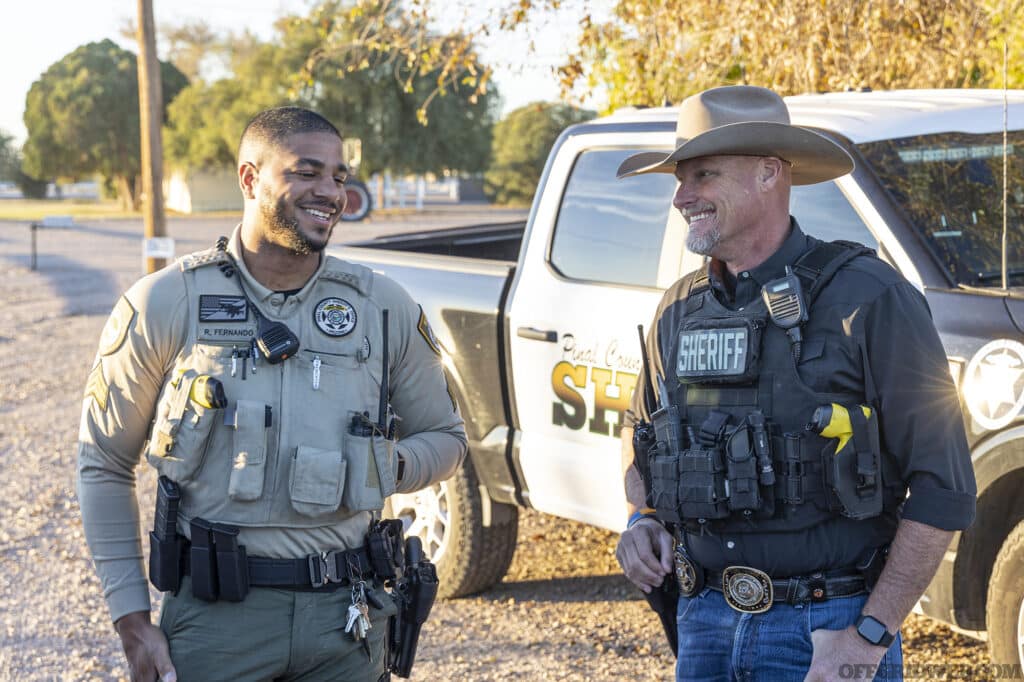
As you worked your way up through the ranks, what was your ultimate goal?
I started with the Salt River Pima-Maricopa Indian Community and became a gang and drug detective within a couple of years. I really loved it. But unfortunately, I felt the president and the administration at the time were really undermining the rule of law. President Obama, his administration, I just thought they were doing things that were tearing away at the fabric of trust that society has in law enforcement. And things were changing. Social media was coming about. I thought, you know, somebody’s got to do something about this.
The other thing that I noticed is in law enforcement, unfortunately, you don’t always have the best leaders. You have supervisors. You don’t always have leaders. And I saw things I thought I could do better. Instead of being that guy that was just going to sit and complain about it and run my mouth, I decided to do something about it. So, one day I told all the guys that I worked with, “I’m going to run for sheriff.” They thought I was crazy. [laughs]
I lived in Pinal County already, traveled into work every day. And I said, “No, I’m serious. I’m going to run for sheriff!” And they said, “Nah, you’re crazy.” Well, six months later, I took a job here at Pinal County with the purpose of running for sheriff. I was here for a couple years working as a deputy, then as a reserve, and then I left so that I could run for sheriff.
I also started another business, made some money that would put me in a position to be able to do that. And then I ran for sheriff at the end of 2015 all through 2016, and was fortunate enough to win the primary 63 to 37 percent. And then go on to win the general election 60 to 40 percent.
So, that’s how I got to this point. It was really just saying, I don’t like what it is, and I want to be part of the solution. And so I went through some very uncomfortable times, made some hard, hard decisions. Really took some hits financially as a family to get to this point. But we knew what the target was, what the end goal was, and so we stayed focused on that. And with hard work, determination, and faith in God and the process, we were fortunate enough to be in this position.
You’ve been very outspoken about your support of the Second Amendment, but many legislators are working to dismantle it with unconstitutional laws. How can you and others in your line of work preserve 2A rights?
You know, that’s a great question because I get labeled as a constitutional sheriff all the time. I think they mean it to be an insult. I don’t take it as an insult.
First of all, as a sheriff, when I swore an oath — when I put my hand on that Bible and was elected, I swore an oath to protect and defend the Constitution. And I always say to these reporters, you’re referring to me as a constitutional sheriff. I swore the same oath as every other elected official. What you should be asking them is, why are they not upholding their oath?
Now, one of the challenges that a sheriff runs into that’s different than a normal elected official is I am part of the executive branch. I don’t make the laws. I don’t judge on the laws.
I basically am an executive piece of it. So, what happens is you will have, like in many states, where they push to undo the Second Amendment, to subvert it, to infringe upon it. That’s what they’re really doing. Then, it puts a sheriff in a very tough spot. The sheriff has to make a decision.
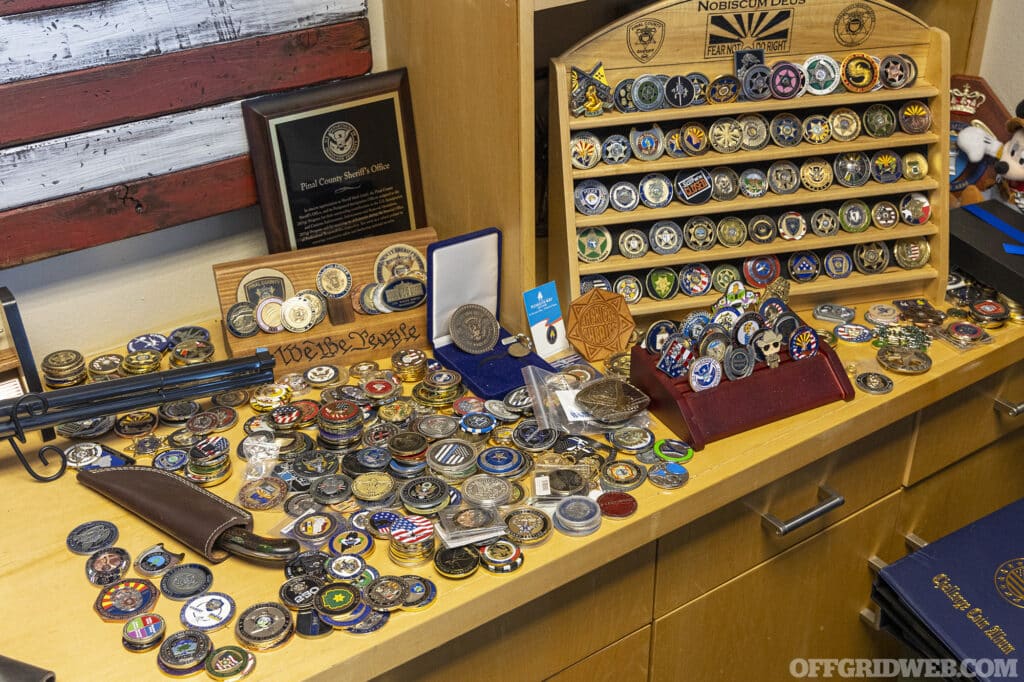
Do you follow the state law that the men passed, which we have seen time and time again that the Supreme Court has upheld that they were wrong, or do you follow the Constitution?
I believe in the Constitution being the supreme law of the land, and I believe that it ultimately will always supersede. So, that’s a long way of telling you that as long as I’m in a position of authority in government, I will always fight vehemently to defend the Second Amendment.
That’s great to hear.
And let me take one more step further, because let me explain. Take the guns out of it. Let’s just talk Second Amendment. It’s an amendment to the Constitution. I wouldn’t let you change the First Amendment or the Third or the Fourth or the Fifth or the Sixth or the Seventh and so on and so on.
I would not let you change those. What they’ve done is they’ve made it about a gun as opposed to making it about an amendment to the Constitution, because if you allow them to change the Second Amendment because you don’t like guns, I promise you what is next is they will tell you that you can only speak freely on Wednesdays and you can only go to church once a month, or maybe the press can only write a paper on Sunday.
Or maybe — and you may think I’m being over-the-top — I would think that over the last few years this government and people in power have proven time and time again that wherever they can, they will take from you, and they won’t give it back.
Above and beyond wanting to protect guns because I think they are imperative for our freedom, above and beyond that, taking the guns out of it, it is an amendment to the Constitution, and I will not let you change any of those amendments to the Constitution. If you want to pass another amendment, good luck. I won’t be up for that either unless it’s something that reduces the size of government and government’s power.
When Arizona Governor Doug Ducey passed a statewide “Stay Home, Stay Healthy” order in response to COVID, you refused to enforce that order, citing the Constitution as the supreme law of the land. What responsibility do LEOs have to make choices like these in the face of possible legal and career-ending consequences?
I think we have a solemn responsibility. They have entrusted the sheriffs to not only protect you from the bad guys, but to protect you from government overreach. It is my job to make sure that you are not trying to pass off a mandate or an order as a law, and unjustly pass things. The executive branch doesn’t make laws.
The judicial branch shouldn’t make laws, but they continue to rule. And by judgments, they’ve been making laws. But the sheriff has a solemn responsibility to defend the people’s constitutional rights and their freedoms. And I viewed the lockdowns as a serious and egregious violation of people’s rights. Nowhere in the Constitution does it say, “on behalf of a health emergency” or “because it’s what’s safe for people,” we can subvert or put the Constitution aside or put it on the bench for a little while. It’s not the way it works. The Constitution is there. It is the supreme law of the land.
What they were doing, in my opinion — and I think ultimately it was proven, it didn’t take a rocket scientist to figure out — they were violating people’s constitutional rights. So, we told the governor, no, we weren’t going to do that here in Pinal County.
I think the majority of the citizens appreciated the bold stance. I had some that didn’t. But when I explained my stance to them, at least I took the time to say, I’m going to listen to you, and then I want you to listen to me as to where my stance is. And I have no doubt we stood on the correct side as we watched as the majority of places across this country violate people’s constitutional rights.
We had a saying in SWAT: you will not rise to the occasion, you will only rise to the highest level of your training. Whatever it is that you do in life — whether it’s photography, shooting guns, being a police officer — if you are not honing your craft, you will only be as good as whatever training you’ve taken or whatever time you’ve put into your craft.
So, I would say to anybody, especially somebody who is in law enforcement and carries a gun, make sure you are spending ample time training because I think it’s important to the people that you’re serving. I think it’s important to yourself, so that you can come home safe to your family. For anybody else out there that carries a gun, an average citizen, I thoroughly support that. I pull people over and ask them if they have guns in the car. And if they say no, I say, “Well, why not? You should. It’s dangerous out there.”
I fully support people’s right to exercise their Second Amendment rights. I also tell them, please go out and get training so that you don’t hurt yourself or somebody else, and so that you know when you can and cannot use deadly force. So, please educate yourself, get trained, carry a gun — do all of those things.
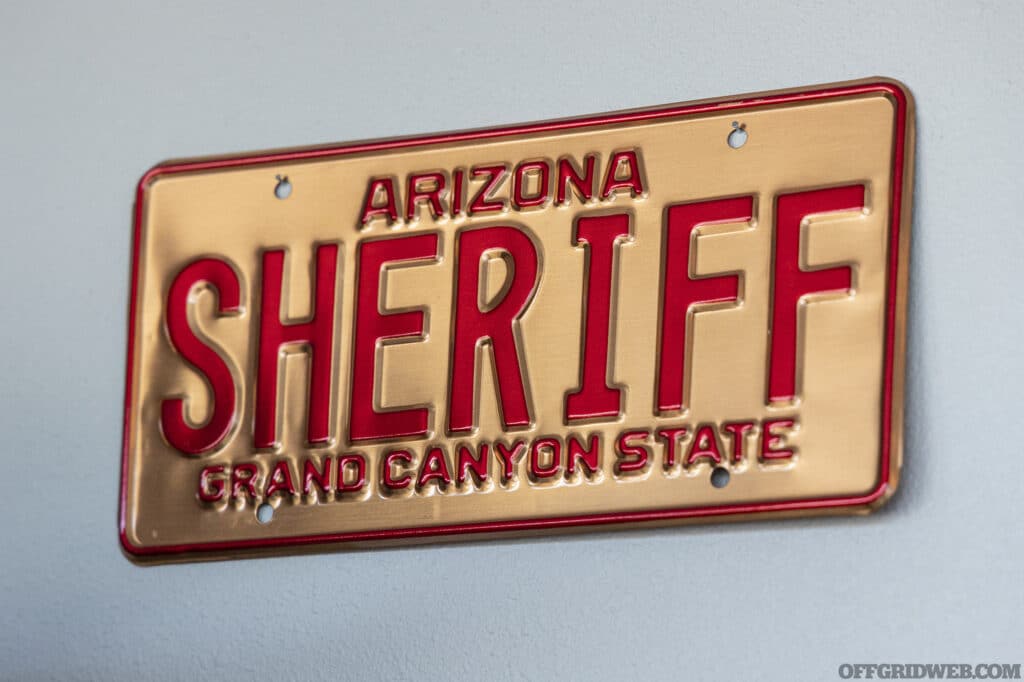
Defunding the police has become a topic of debate in many metropolitan areas throughout the U.S. What short-term and long-term effects will this have?
We’ve seen the short-term effects. The short-term effects have been catastrophic. I mean, we’ve seen cities literally being burnt to the ground. We’re seeing crime on the rise in major cities. We’re seeing police agencies that basically either abandoned sections of their jurisdiction or — because they don’t want to be sued or they don’t want to get in trouble — they’ve made the determination that they’re going to be more of a cleanup crew than a proactive stopping crime crew. Part of me can’t hardly blame them, but the other part of me says, no, look, you’ve still got to fight. You can’t raise the white flag.
Those are the short-term effects. The long-term effects are what I said in the beginning. They’ve eroded the trust in law enforcement, and now anytime you allow something to be pervasive, it is much harder to get it out and fix it than if you would have just kept it out in the first place. When they do want a course correct, society is not going to like the outcome of how hard it’s going to be to take the law and order back in this country. Plus, you have the long-term effect of hiring, finding people who want to do this job.
America’s strength — everything that we have, all of it — was what the founding fathers said in the preamble to the Constitution. We the people of the United States, in order to form a more perfect union, establish justice. And number two was ensure domestic tranquility. They knew how important the rule of law was to America. And if we lose that — defunding the police is a way to do that — we ultimately will pay the price as citizens, and we may lose our republic because of it.
With that in mind, what do law enforcement agencies in the United States need most right now?
Strong leadership. Right now, you need strong leadership. In times of trouble and in times of stormy waters, you need a captain that will grab hold of the helm, that will stay on the course, that will protect the crew, and make sure that the crew’s needs are met.
What we’re seeing is weak leadership, abandoning their troops, firing people because of the social pressure that might come along with a decision that a police officer makes in a split second. I tell people very frankly, we are not in the business of good optics. If we show up, the optics of what we have to do to restore balance and order to chaos is not always good.
But my job is not to worry about the optics of it, my job is to worry about the outcome of it. And my job is to restore balance and order to chaos. And we do the best we can to prevent crime in every situation, but we will also hold you accountable if you break those laws. Should you choose to be violent with us, we are more than prepared to be violent with you as well.
This is the reality of the business we’re in, and I stand with my people when they do what’s right. When they know that you’ll have their back if they do what’s right, they make better decisions. The police officers who make bad decisions are hesitating for a split second because they’re not sure if they’re going to get in trouble. And those split seconds, not only do they create bad decisions, they also are getting cops hurt across this country. And families are losing loved ones because they made that split-second pause to determine whether or not they were going to get in trouble.
We need leadership to stand against these social pushes that we’re seeing in this country of defunding the police, of saying that only one race or one skin color matters, and those types of things. Those are all social constructs, and they are not true to what this country is. Nobody cares more for people than we do, because that’s why we go out and put on a gun and a badge and we’re willing to protect people every day.

What advice would you give to someone who is considering beginning a new career in law enforcement?
Do it. You know, we need warriors now more than ever. I’m not going to sit here and tell you it’s not a challenging job. It is a challenging job; it is a stressful job at times. It will bring the best out of you, though. It makes you a better person.
If you take this job, go out and enjoy it, work hard at it, and don’t let the things that you see consume you. The average police officer, they say, will experience between 400 and 700 traumatic incidents in their career.
The average citizen only experiences two to four in their entire lifetime. The impact that this will have on us personally, and on our families is substantial. So, if you’re going to do the job, do it, but make sure you have an anchor in your life. Whether it’s religion, your family, or something else that anchors you so that your ship doesn’t set off to sea with no rudder.
It’s a great career. I think it is the most important and honorable career for this country, for maintaining our republic. Now is the time where you need warriors more than ever.
You’ve called the situation at the southern border “the greatest threat to national security right now.”
How has your experience here in Arizona led you to that conclusion?
We’ve been saying this for a while. This is not something that is new to us. October 7, 2023, really exposed just how vulnerable we are. I think a lot of Americans woke up to the fact that we are exposed.
We saw Hamas go into a very protected and very secure Israel and do what they did. Atrocities. Terrorism. And we see those same types of people coming into our borders all the time — 160 to 180 terrorists being caught a year, 16,000 criminals last year that were convicted of crimes in this country or wanted by law enforcement in this country trying to get back into America.
We’re getting gang members from other countries. We’re getting people that are coming from places like Mauritania that has become one of the leading breeding grounds for Al-Qaeda. We have Senegal, Chad, China. We have Chinese nationals coming across to the tune of over 30,000 in a year. And then we have the FBI telling us they found 10 makeshift Chinese police headquarters across this country.
This is the point that we’re at. We’re allowing these people to just walk across our border and give them carte blanche in our country. It’s not a matter of if, it’s a matter of when that rears its ugly head. So that’s one piece of it. The second piece — probably even more important because it’s affecting American lives every day — is the fentanyl piece. China is bringing fentanyl precursors, giving it to the cartels. The cartels are then making it into pills and powder. And they are bringing that fentanyl across our border. And it has become the leading cause of death amongst Americans between the ages of 18 to 45. We have lost over 100,000 Americans per year to fentanyl poisonings.
Let me put that into perspective. If you would drop a bomb on Phoenix and kill 100,000 people, what would we do as a country? We went to war for 20 years over 9-11. We’re losing 100,000 civilians and our government is doing nothing. As a matter of fact, not only are they doing nothing, they’re pulling back even more so that the border is more unsecure than it has ever been.
We are seeing unprecedented amounts of people and drugs coming across while we are losing 100,000-plus American civilians, that could have been stopped, by the hands of people that are really enemies to this country. China and the cartels who have zero regard for human life. So, when we talk about the greatest threats to America, I’m the simple guy. I look at it and say, what’s killing the most amount of Americans? Fentanyl.
So, I don’t see how everybody else doesn’t see that this is the greatest national security threat. This is what’s claiming more American lives every day, and we are putting more Americans at risk every day with the amount of people that we are letting in here, many of them who hate America.
That’s why I say it is the greatest national security threat. There’s nothing that’s happening in the Middle East and there’s nothing that’s happening in Taiwan that affects me and my family more than what is happening at the southern border.
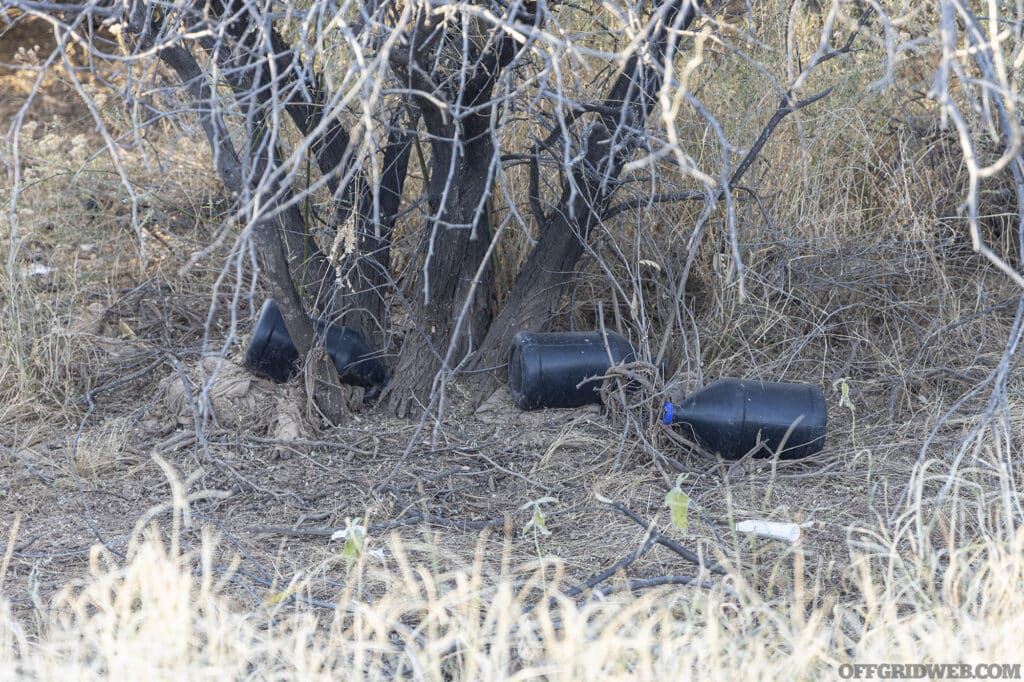
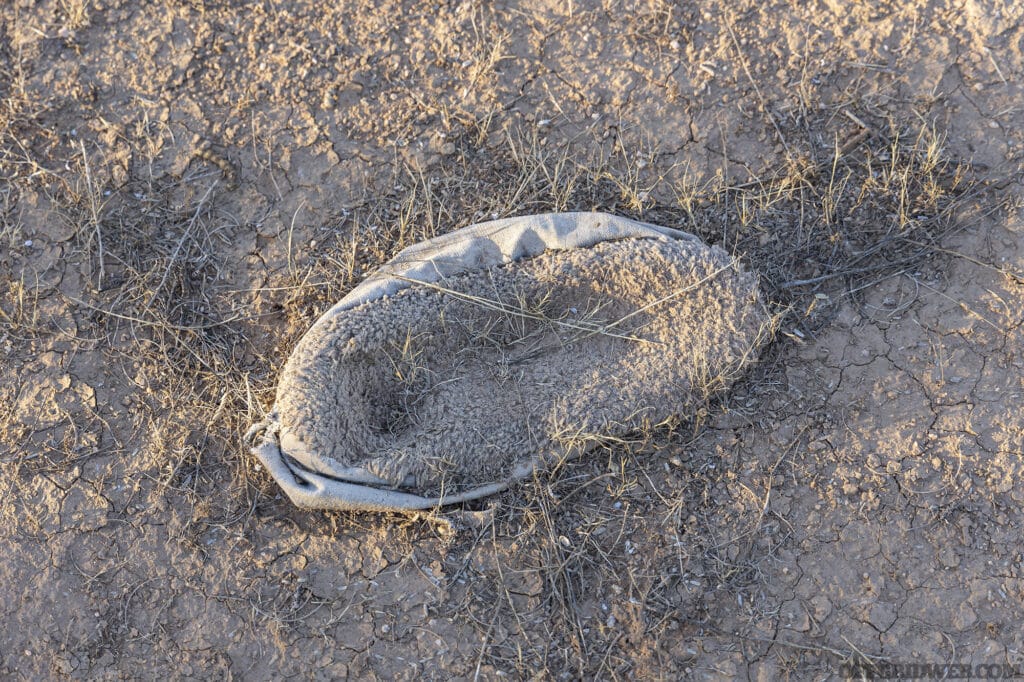
During the ride-along, we stopped in a field near an unassuming farm road where the landscape was scattered with dozens of empty water jugs, food cans, and carpet shoes left behind by illegal immigrants.
What would you say is the biggest misconception about the state of the southern border right now?
Well, I don’t know that it’s a misconception — I think it’s intentionally misleading. I think you have a government that is intentionally downplaying, and in most cases lying to the American people. They’re standing at a podium telling you that the border is secure. They’re telling you that people aren’t just walking across the border. They are lying. They are. And they’re doing nothing about it.
And the media — that’s why I say this is purposeful misleading — the media is covering for them. If you bring it up, then they want to quickly try to debunk what you say. Case in point, I just released a video recently where I said that a lot of these people crossing the border were getting cell phones, they were getting plane tickets to wherever they wanted to go in the country, getting Visa cards with $5,000.
The media could not work harder and faster to try to debunk me. Not to say, hey, we should look into this. They wanted to debunk me. And where did they go for their source? They went to the federal government, the same people that are actually giving our tax dollars to them. They do it through non-governmental organizations. And those non-governmental organizations or NGOs are the ones giving them the money. So, you have a complicit media that is covering for them.
The founding fathers would be turning over in their grave to know that the media betrayed the people. That is why the freedom of the press is in the First Amendment with the freedom of speech and religion and the right to assemble, because they knew how important the press would be in holding the government accountable. Not necessarily siding with the people but telling the people the truth. We don’t have that anymore. And so that’s one of the great threats to the American people. It’s not even a miscommunication. It’s flat-out misleading and lying to them.
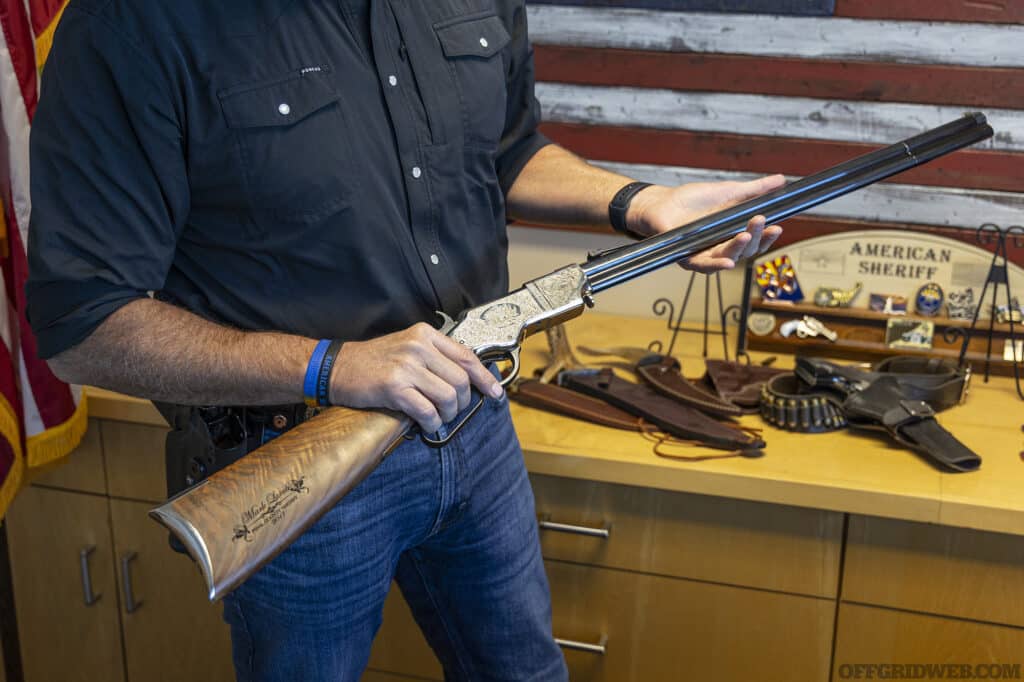
Why did you make the choice to run for Senate?
I didn’t want to. This was not on my list of things to do. I love being sheriff. I had a plan, not just as a sheriff but beyond that. But I just started seeing the way the country was going, and people were saying, hey, sheriff, you should run for Senate. So, I actually went to my wife and said, we’ve got to come up with a list of reasons why not to do this. And in that process, we started feeling very compelled to do it.
Then, we had a tragic thing that happened to us. I got a knock at the door at 8:30 at night on December 16, 2022. And it was a sheriff from Maricopa County, two of my chiefs, and two guys from Gilbert PD. My wife and I had been wrapping presents, and I had been out at a dinner and shopping and came home. I’d been home for maybe 20, 30 minutes and got the knock on the door.
I opened the door and immediately knew something wasn’t right. One of my chiefs, who’s known my kids for a long time — my middle son, Cooper, had a fiancée and an 11-month-old daughter. And the only thing my chief could say was, “Cooper and the baby are dead.” And so immediately, in the snap of a finger, I lost my son, I lost my 11-month-old granddaughter, and I lost my daughter-in-law.
I didn’t want to do anything at that point. Didn’t want to run for Senate, didn’t want to run for sheriff, didn’t want to even get out of bed. But a few weeks later, somebody said something to me that just sparked something. Going through this with my son reminded me: there is no guarantee for tomorrow, and the only thing we take with us in this life is what we do. And I could not stand on the corner and watch the building burn to the ground, especially when I knew I had the capability and the ability to do it.
There’s an old Danish saying that I love: “Whoever has the ability has the responsibility.” Well, I have the ability on the border stuff and on crime. And I run a large agency with a budget of over $60 million with over 600 employees. And I have been working on trying to protect national security within my county for a long time. I have the ability, and I felt like I had the responsibility.
I always tell people, look, this country’s in chaos. We can’t get along. Politics is in chaos. The world’s in chaos, frankly. And if your house was on fire or there were thieves in your house or there was a domestic situation where mom and dad can’t get along, are you going to call a politician? No. You’re going to call your sheriff. Why? Because we are trained and experienced in restoring balance and order to chaos. It is what we do every day.
You call us in the worst moments of your life. And in minutes, we are expected to start to restore balance and order to chaos. And this government, this country, this world needs men and women that are experienced and trained in restoring balance and order to chaos. So, I’m determined to be free, I’m determined to preserve America, and I’m going to Washington, D.C. for that.
When you ask me why I wanted to do it, I can’t say that I wanted to do it. But I felt compelled to do it. And you better believe I’m going to go 100 percent and do what I have to do, because ultimately our country’s on the line.

What will be some of your top priorities as a senator?
Securing the border. I mean, that’s something we’ve got to do day one. Securing the border.
We’ve got to start restoring our energy independence. That’s one of the ways we’re going to dig our way out of the economic crisis we’re in as well. We can’t do that without energy independence because it takes energy to make a product, to ship a product, and to sell a product. It takes energy. And when you increase the cost of energy to the American people and to those industries, those costs will ultimately be absorbed by us. Whether it’s in increased prices or through inflation, we will end up absorbing those costs.
Americans are going deeper in debt. Forty percent increase in credit card debt over the last year, from $765 billion to $1.1 trillion. We’re at an all-time high on vehicle delinquencies. We’re at a 20-year high on mortgage rates. I mean, our economy is in rough shape. We’ve got a lot of issues that this administration has bungled. But let’s start by securing our border and fixing what is the greatest threat to our national security. Let’s start there.
Let’s stop the flow of fentanyl. Let’s start to work on our economy immediately. And as it relates to crime, as a senator, my job is not to go out and tell local law enforcement and states what to do. I believe in the 10th Amendment. My job as a U.S. senator will be to yank the chain back on the federal government. We need to do some serious, serious oversight on federal law enforcement and really evaluate whether these agencies
even need to exist at this point. I hope to be digging into that really quick as well, because I think the American people would expect that of me as well.
Many Americans have become disillusioned by politicians who make promises but don’t follow through, seemingly putting their own careers above their responsibility to their constituents.
Well, I think the key is not getting involved in the political swamp. That’s the key. I’m not a politician. You know, I’ve taken stands when I was the only one standing for these things. Nobody else was there standing with me, and it was not easy.
But I will tell you, for me, it actually was easy, because the line is so distinct between what is right and wrong and what is constitutional and not constitutional. I hope to be that person that stands up for the American people. The way I avoid the political swamp is not be political.
I think what people will expect is for me to be the genuine person I’ve been for the last seven years as sheriff, and take that same no attitude to Washington, D.C., and start to fix some of this nonsense.
And I’m not sitting here saying it’s going to be easy, but I think that the clearest path is to just stay on course — follow God, family, freedom, the Constitution. Those are my things. And I think that’s what’s going to keep me grounded, that’s what’s going to keep me weathering the pressures and the political storms in Washington to stand up for the people.
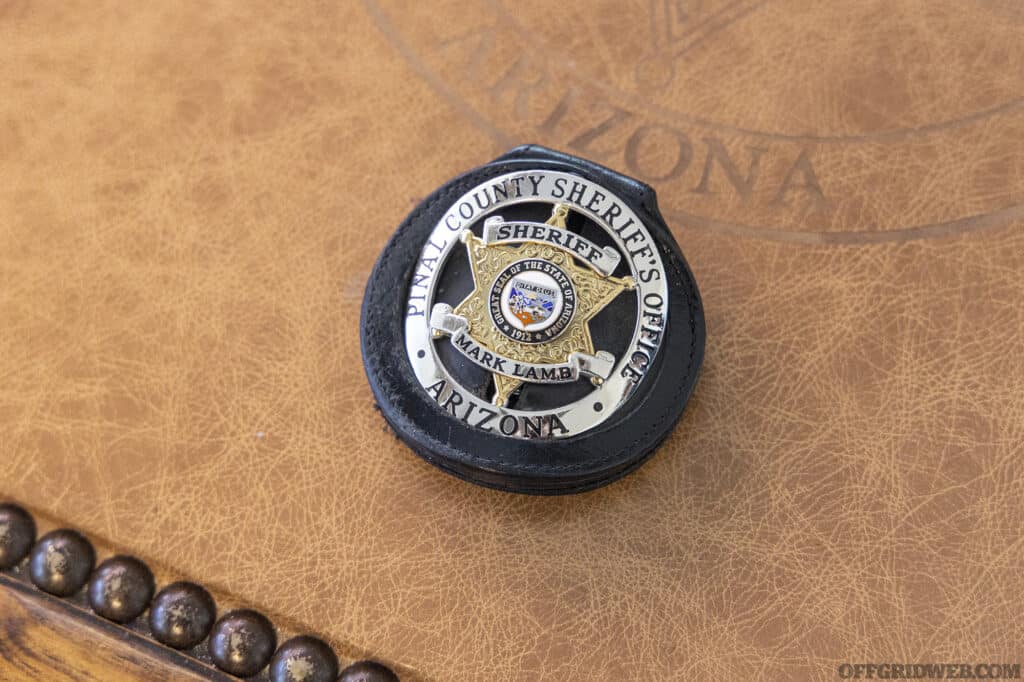
Where can readers learn more about you and your campaign?
Please go to sherifflambforsenate.com. If you live in Arizona, sign the petition. If you don’t live in Arizona, you can still donate to my campaign.
You can share my messages online. You can go to Instagram, @americansheriff on Instagram. On Twitter, it’s @sherifflamb1. On Facebook, it’s Sheriff Lamb. And on TruthSocial, it’s American Sheriff as well. But yes, please go support. Share the messages. Tell your friends. Donate some money if you’ve got a few bucks.
And sign the petition if you can. That’s what it takes. Politics is not an easy thing.
Here’s what I’m asking. My wife and I, my family, we have slid all of our chips into the center of this table on this hand. And we’re asking that you throw a couple chips on the table with us. I’ll do the rest of it. I’m just asking for a couple chips to help us as we bet all of it on this.
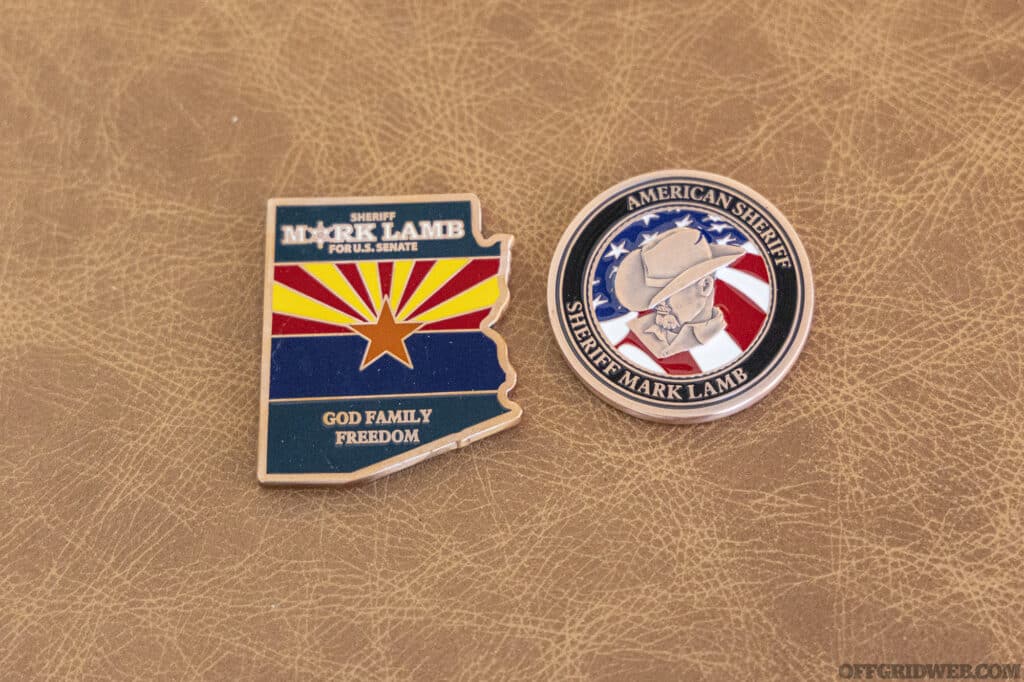
Mark Lamb’s Everyday Carry
- Glock 34 — “It’s my concealed carry gun. I like the long slide. If you’re going to get into a gunfight, you might as well have this.”
- Extra magazine
- Handcuffs
- A few challenge coins
- Ford F-150 Tremor keys
- Wallet
- Badge
- Phone and Bluetooth earbuds
- Cowboy hat
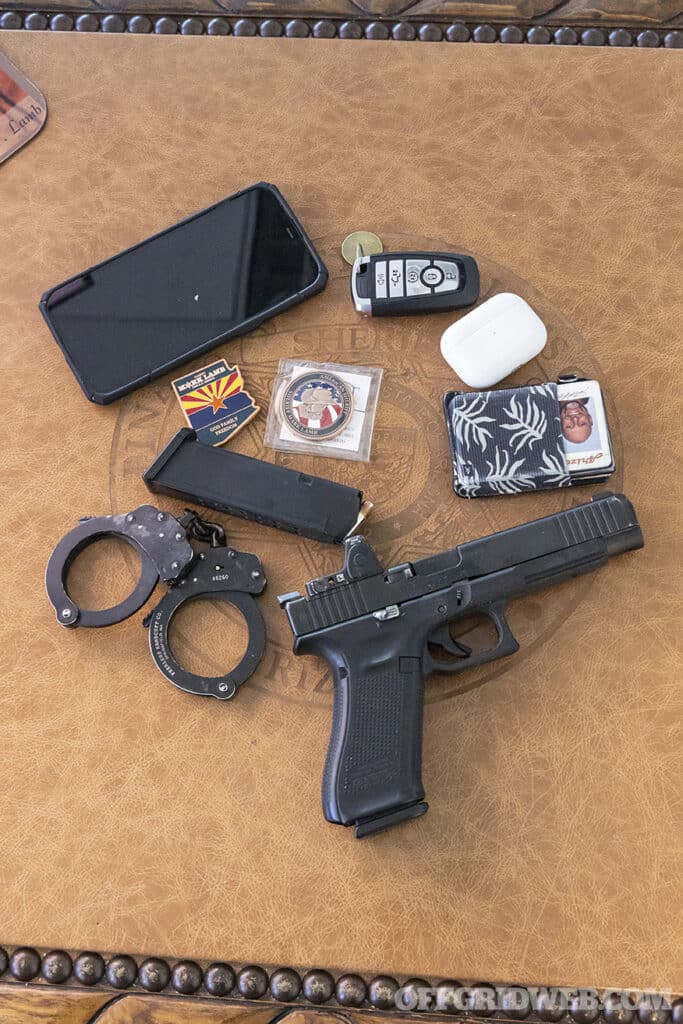
“I wear two different hats, but they look pretty much the same. The one I usually wear every day is a Justin Bent Rail Kermit in the natural color. The other one is a full beaver hat made by Watson’s Hat Shop in Cave Creek, Arizona. It’s $1,500, and they make it to your head, but believe it or not I get more compliments on my $200 hat.”
Read More
Subscribe to Recoil Offgrid’s free newsletter for more content like this.
- No Rain Delay: Fire-Starting Tips for Wet Weather
- Advanced Fire-Starting Techniques in Cold Weather
- Finding Fatwood & How to Use It for Fire-Starting
- Starting Fires with a Fresnel Lens
- Starting Fires with a Lemon: Real or Hoax?
Editor’s Note: This article has been modified from its original print version for the web.


